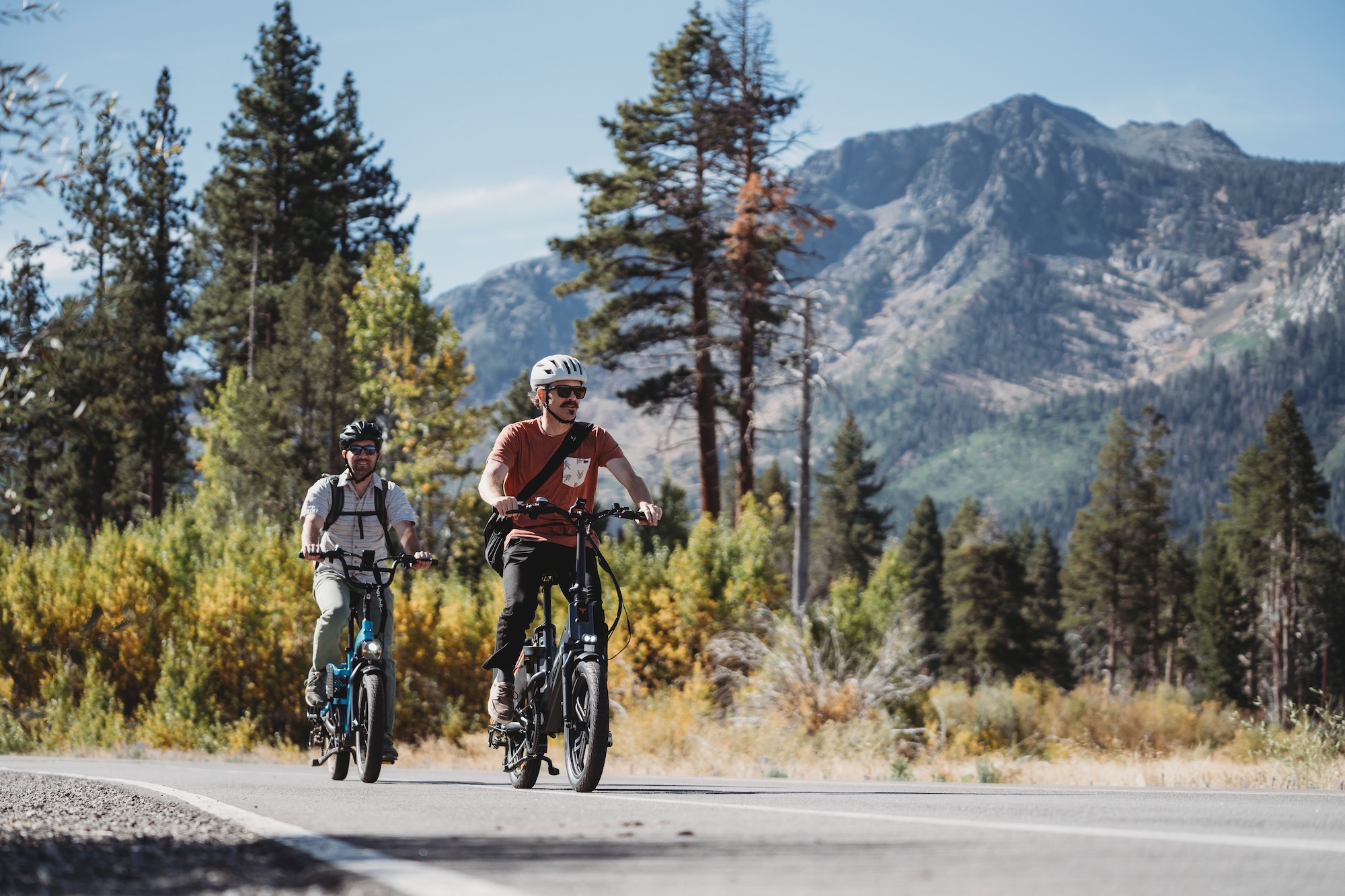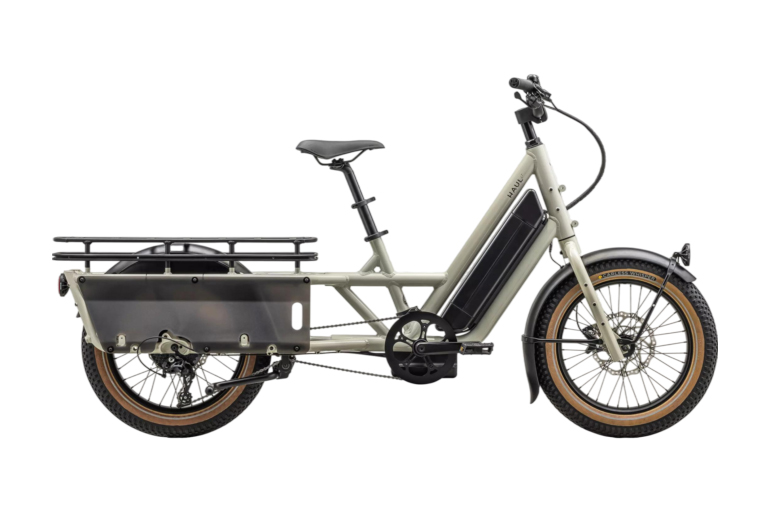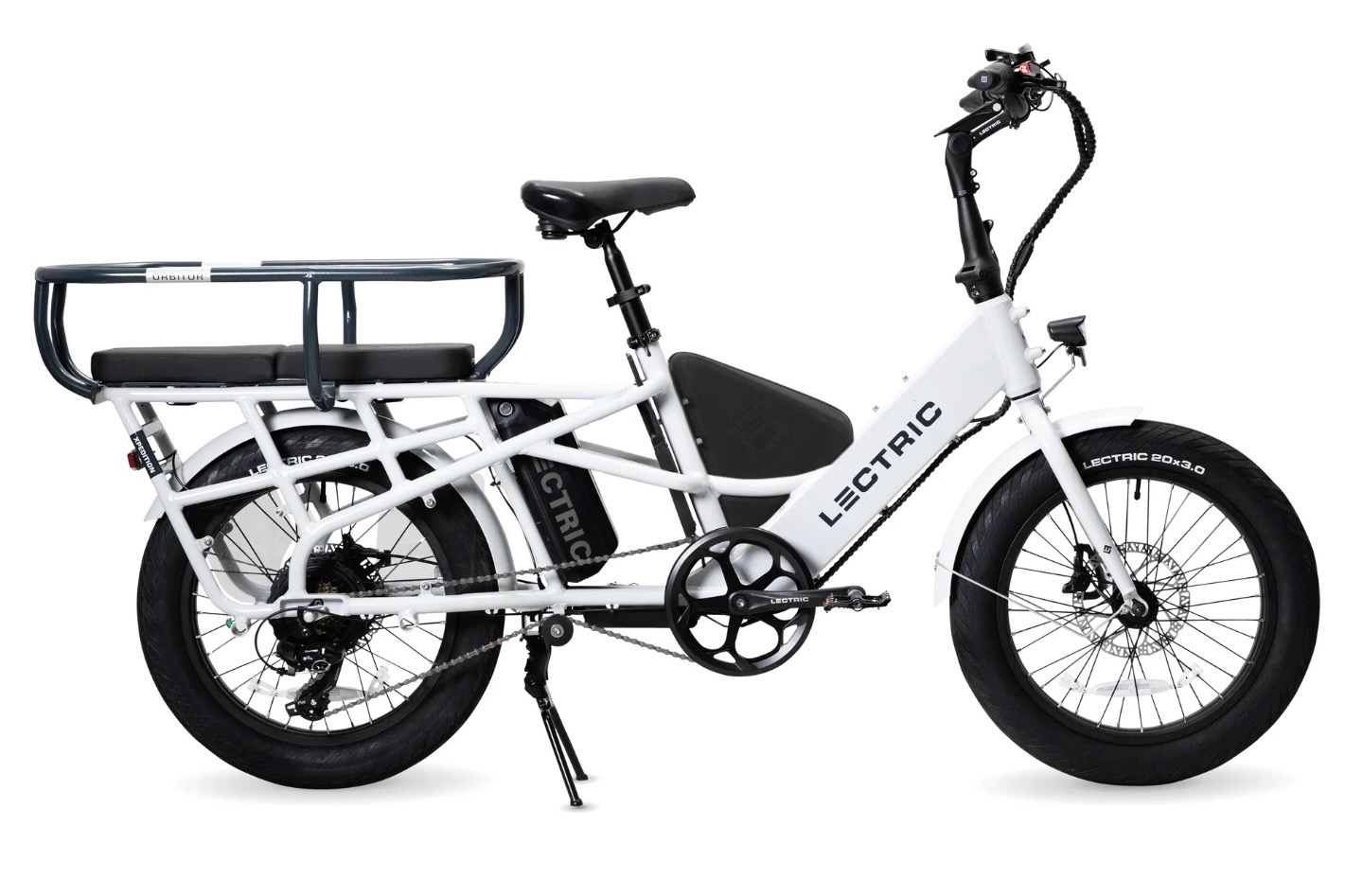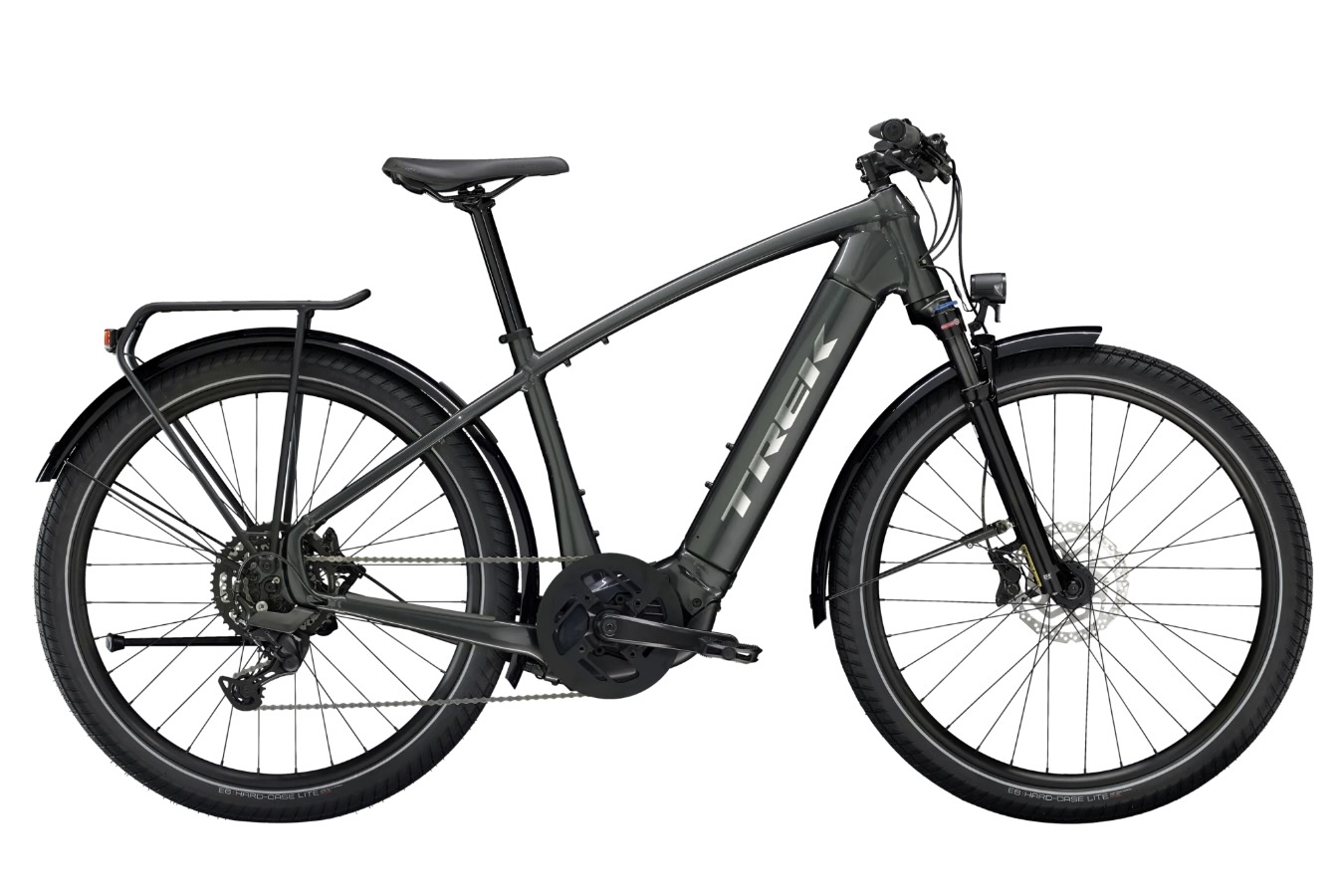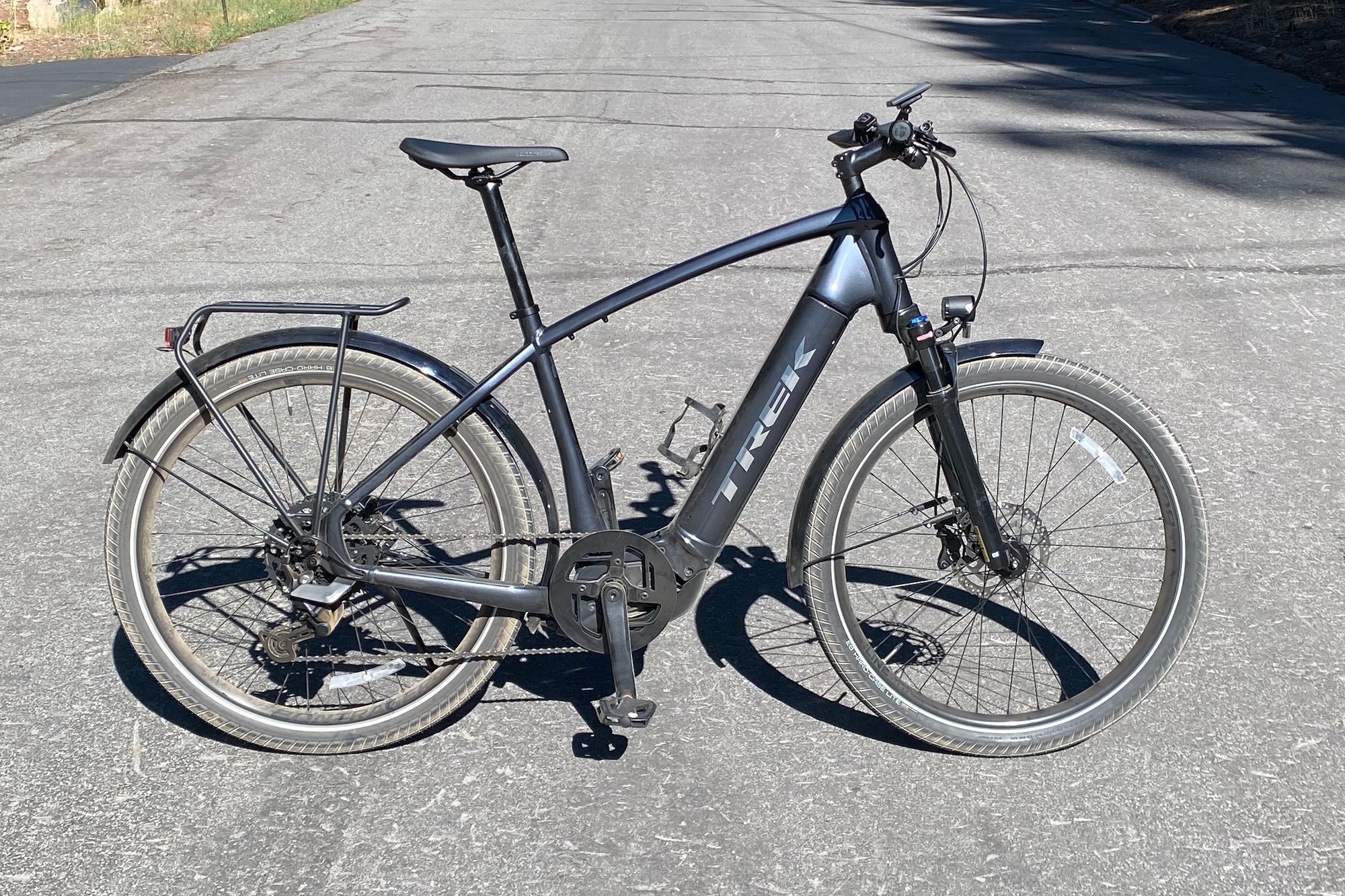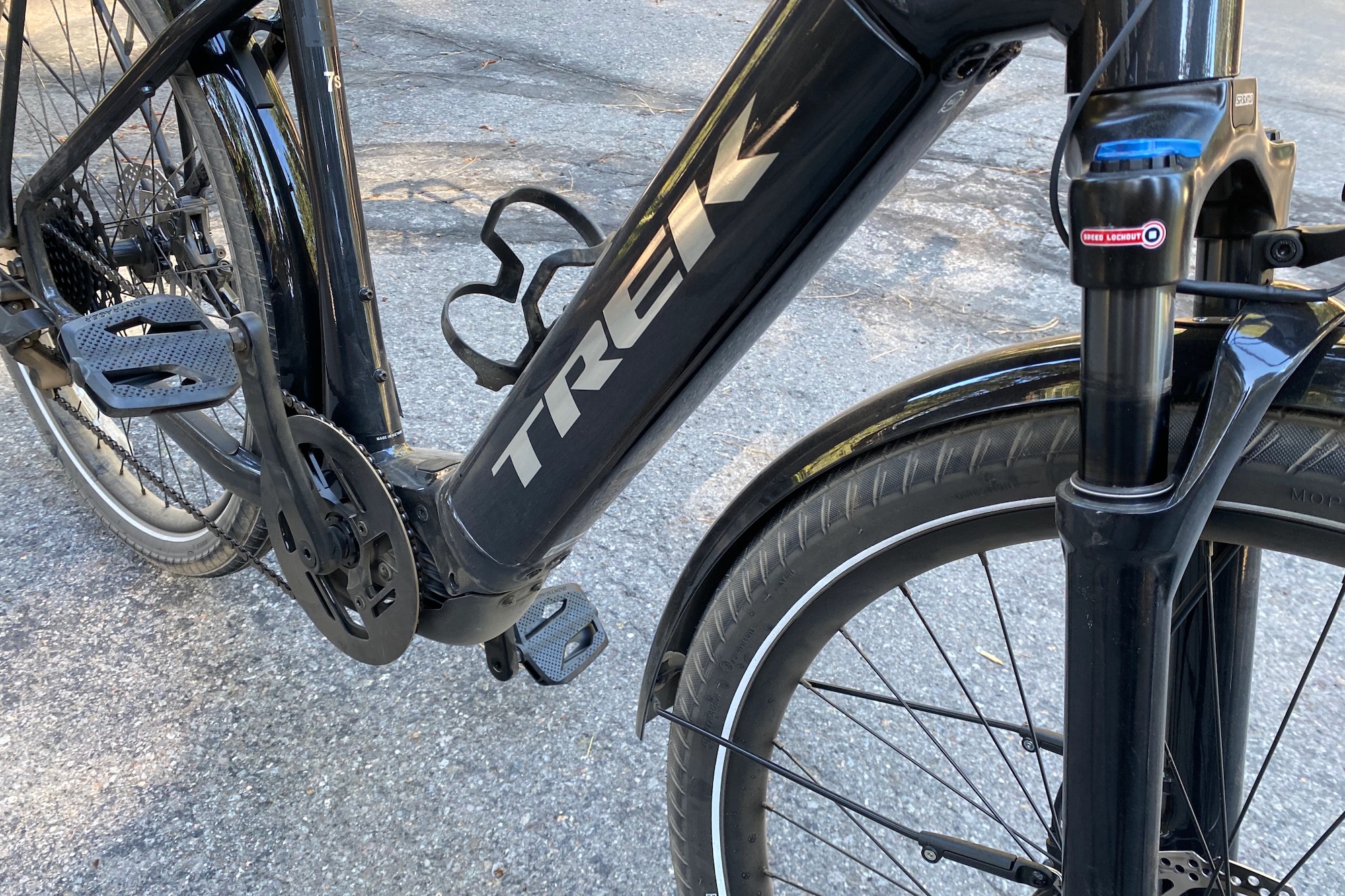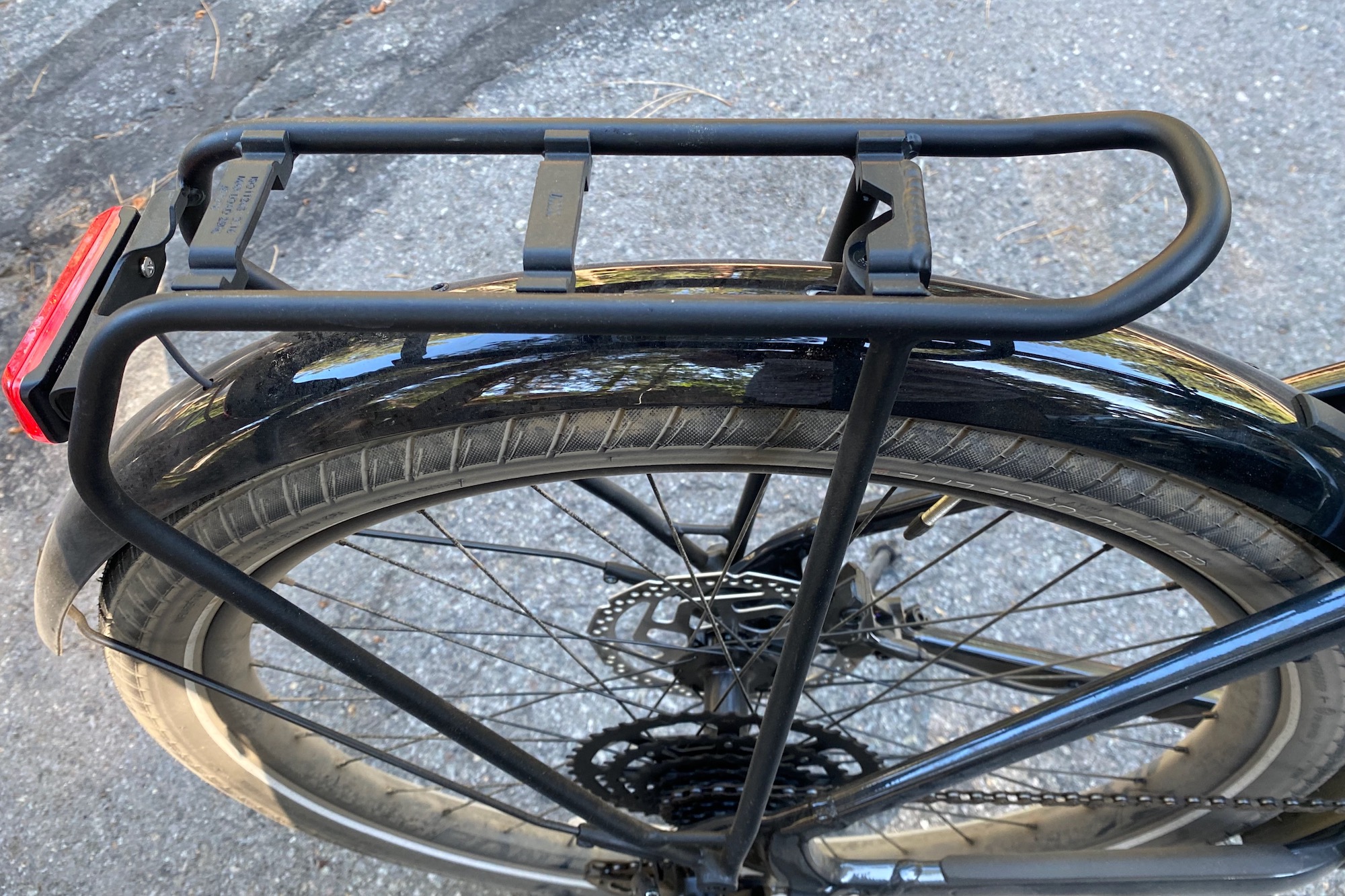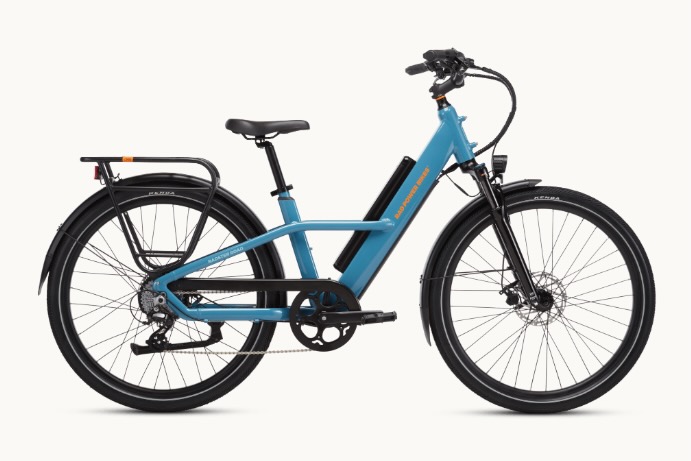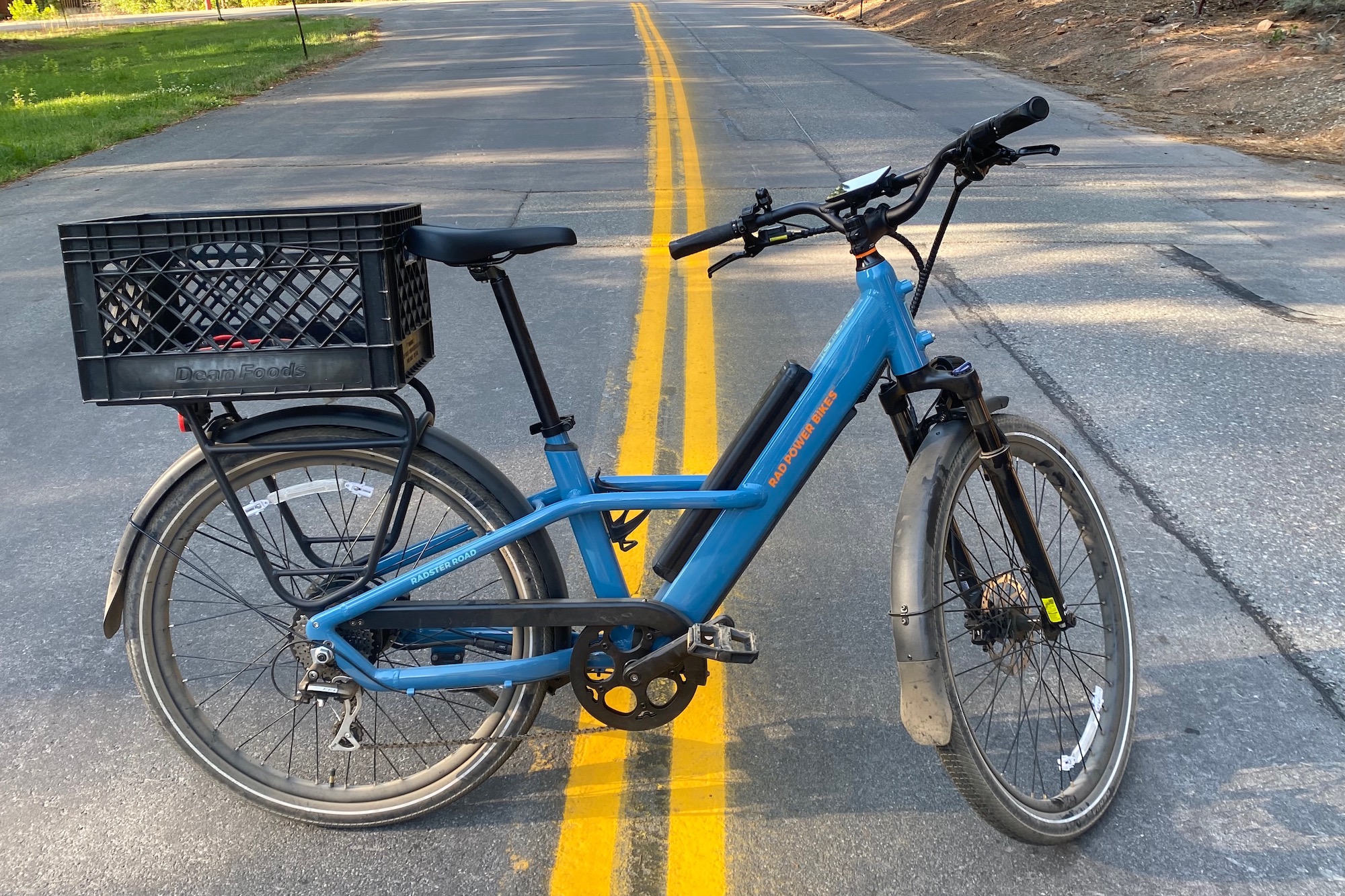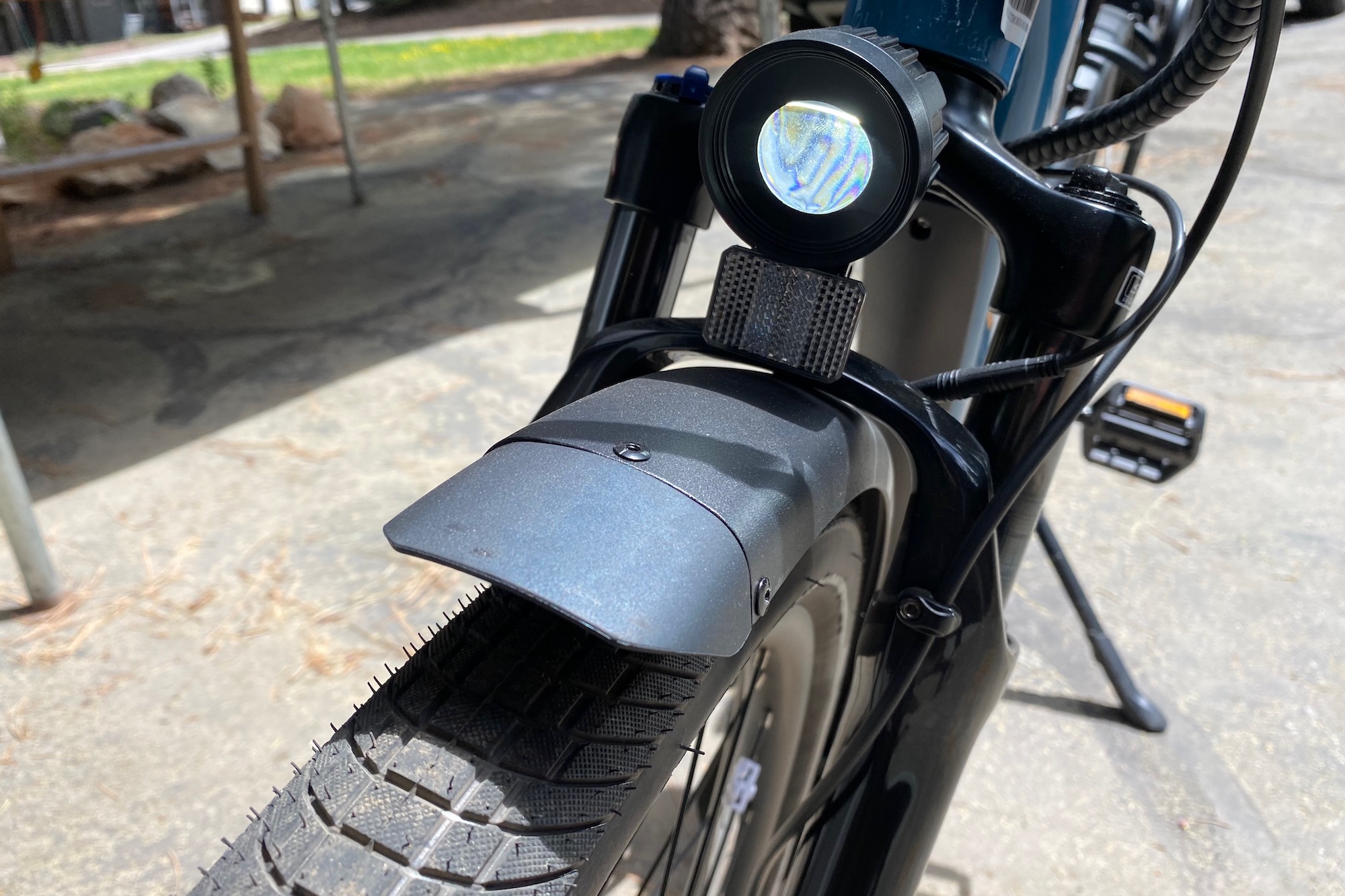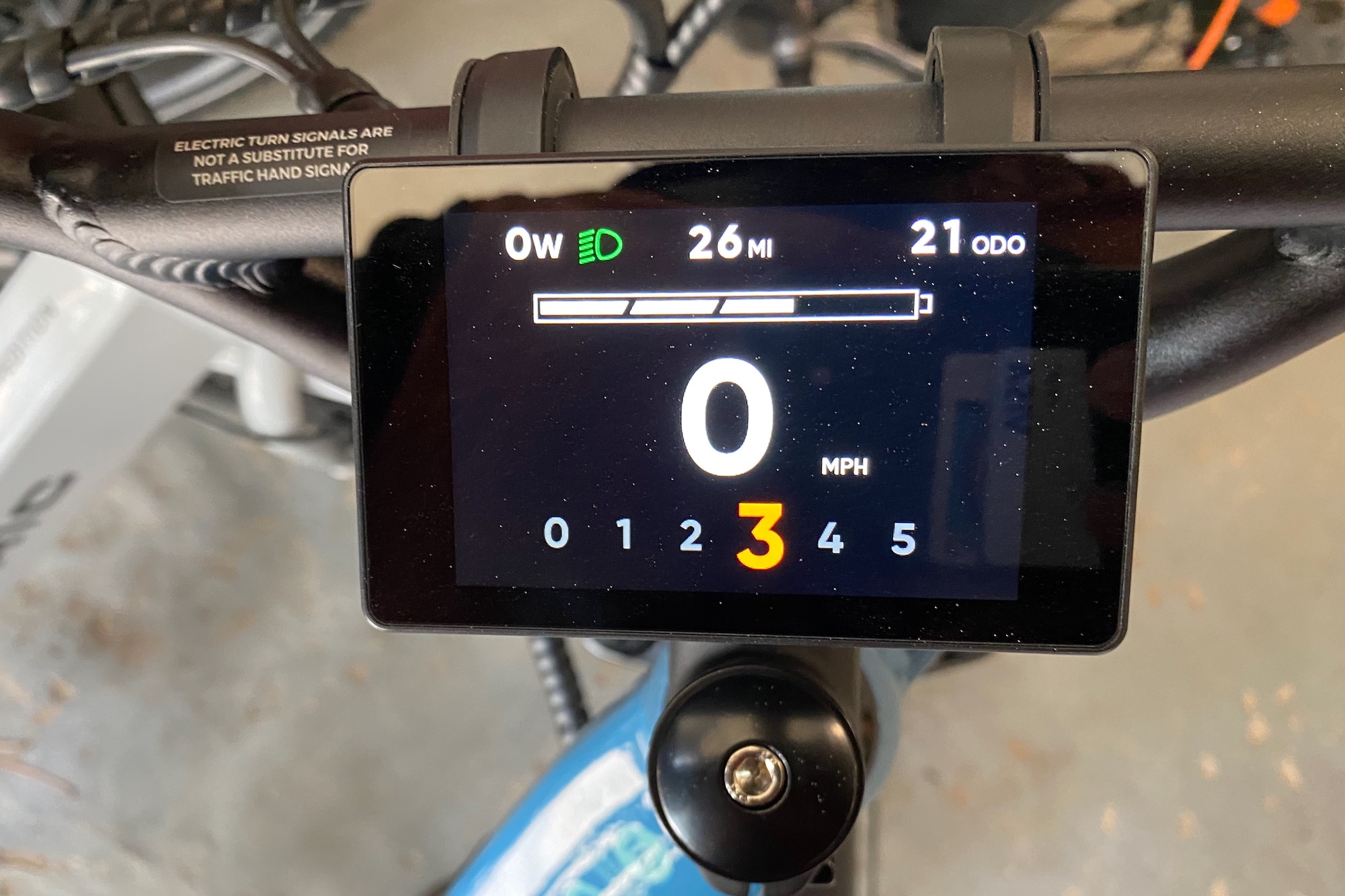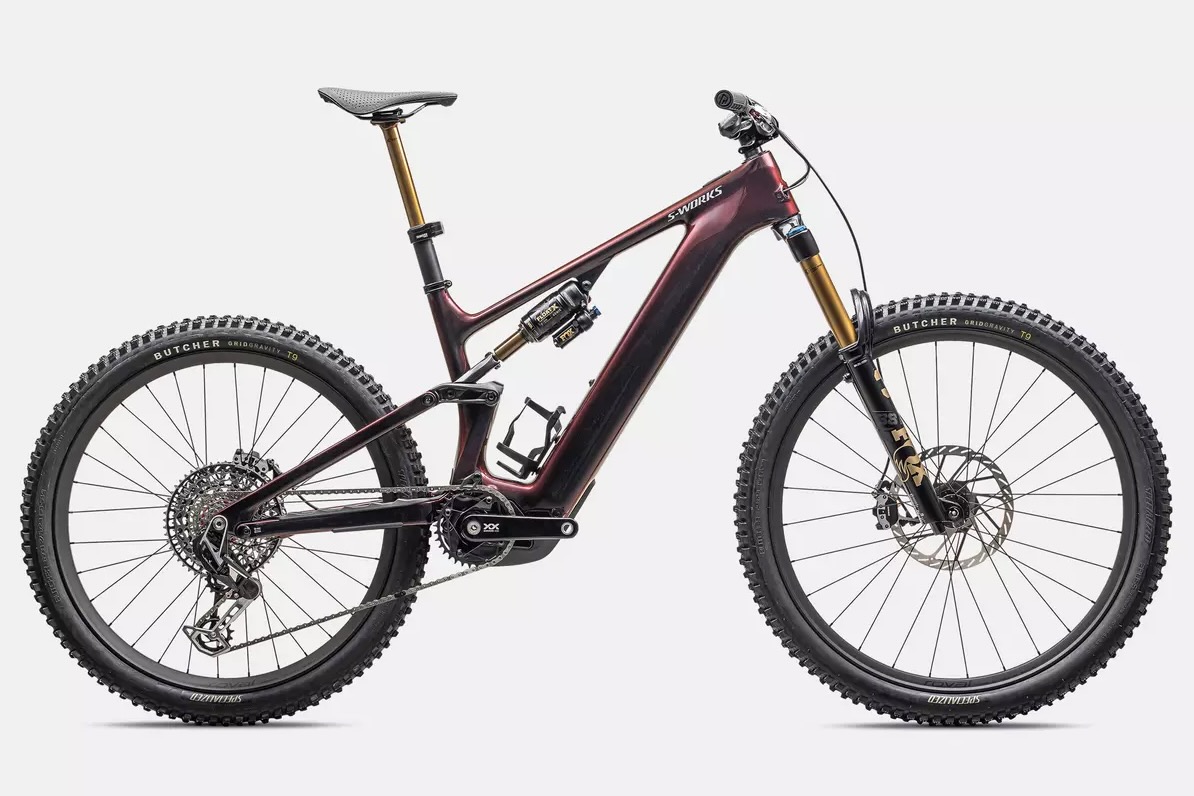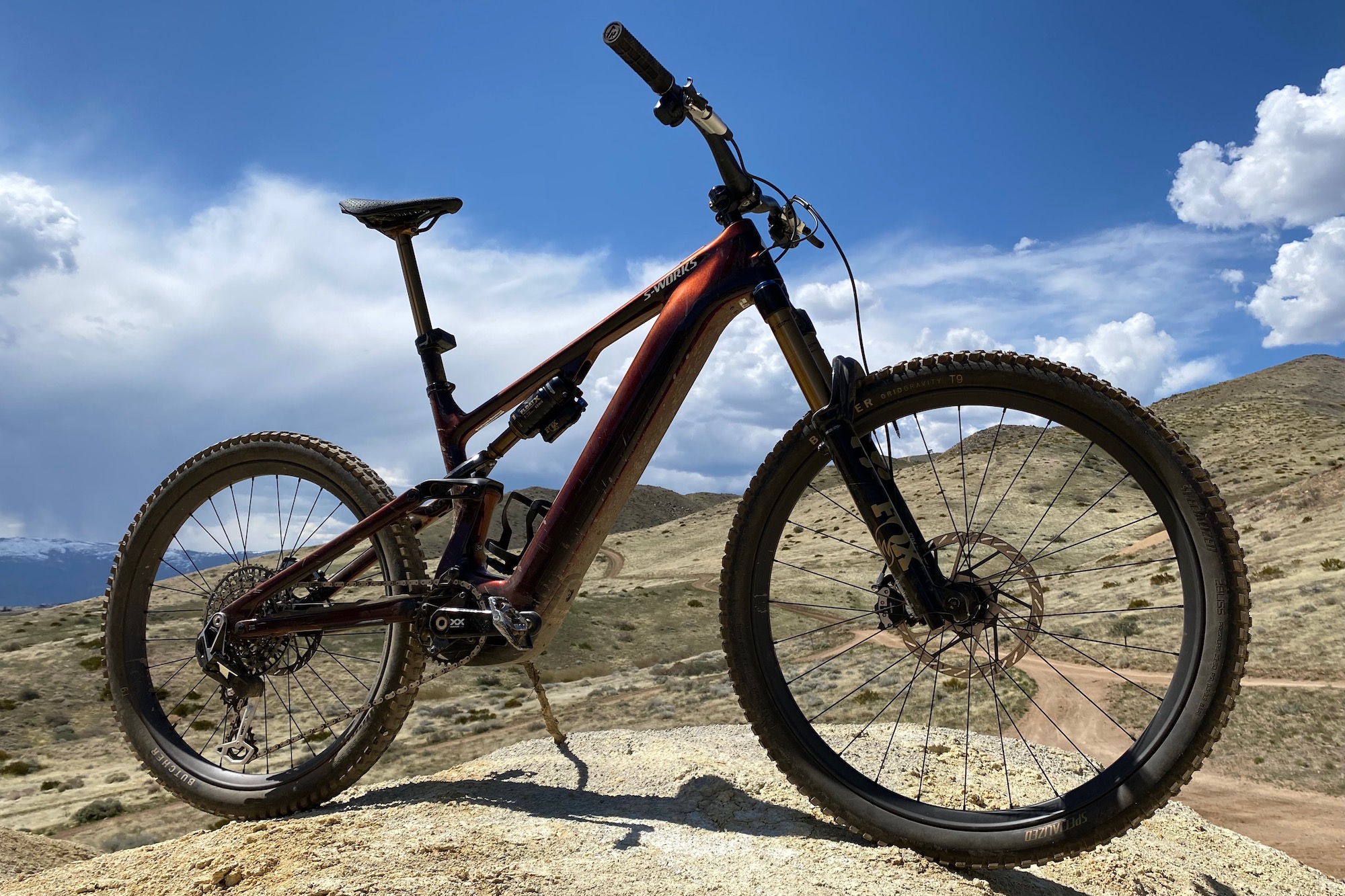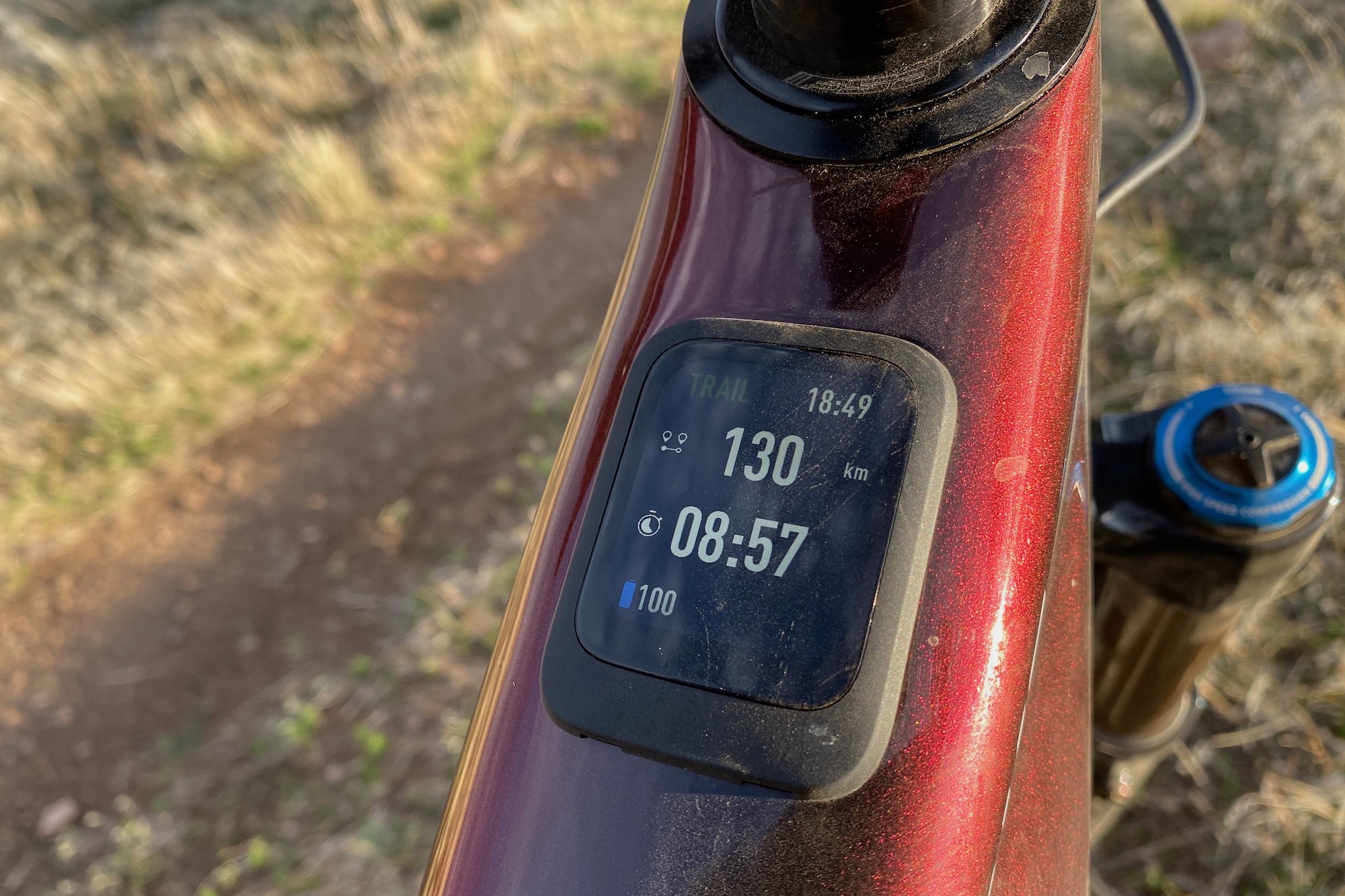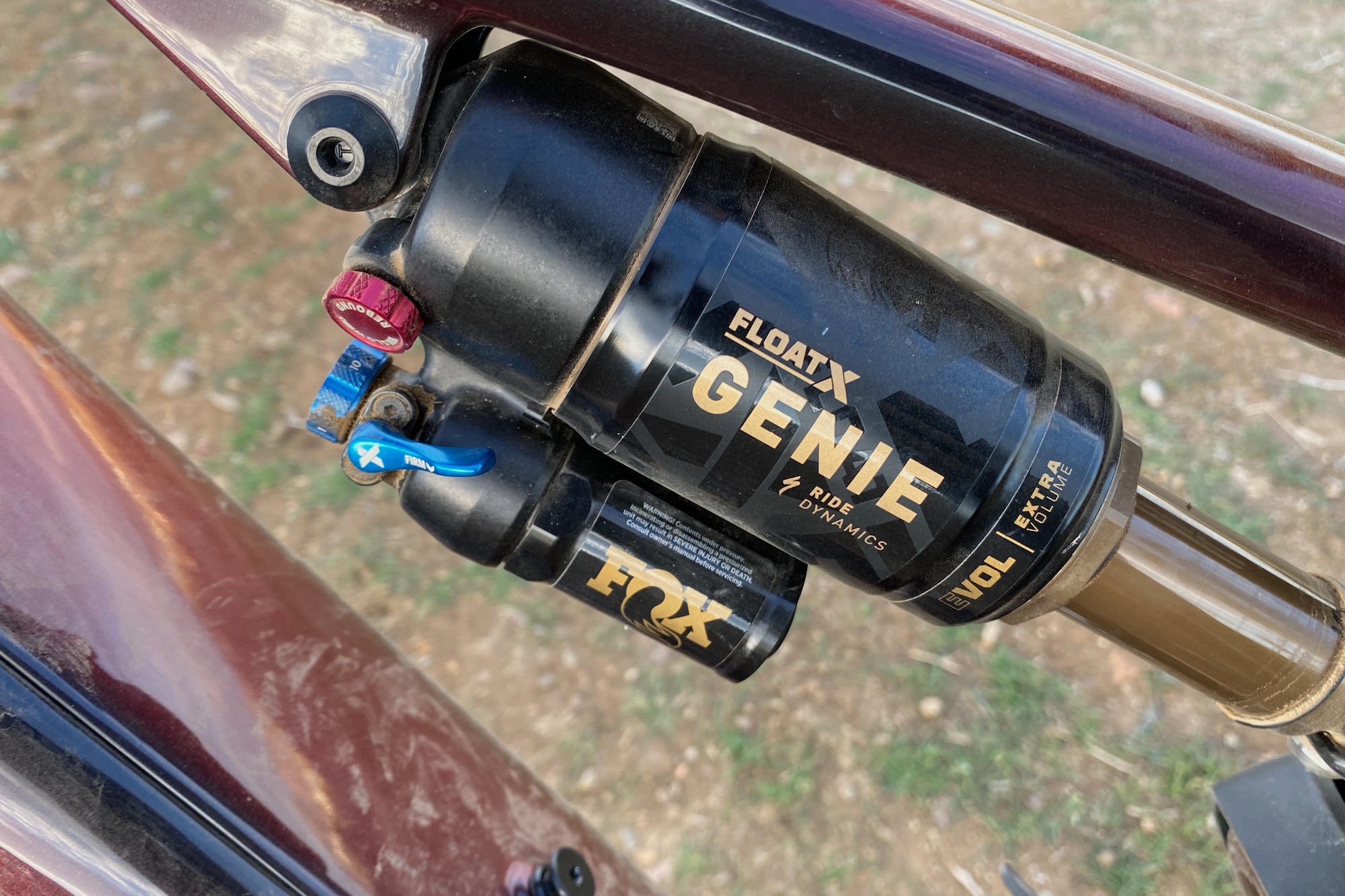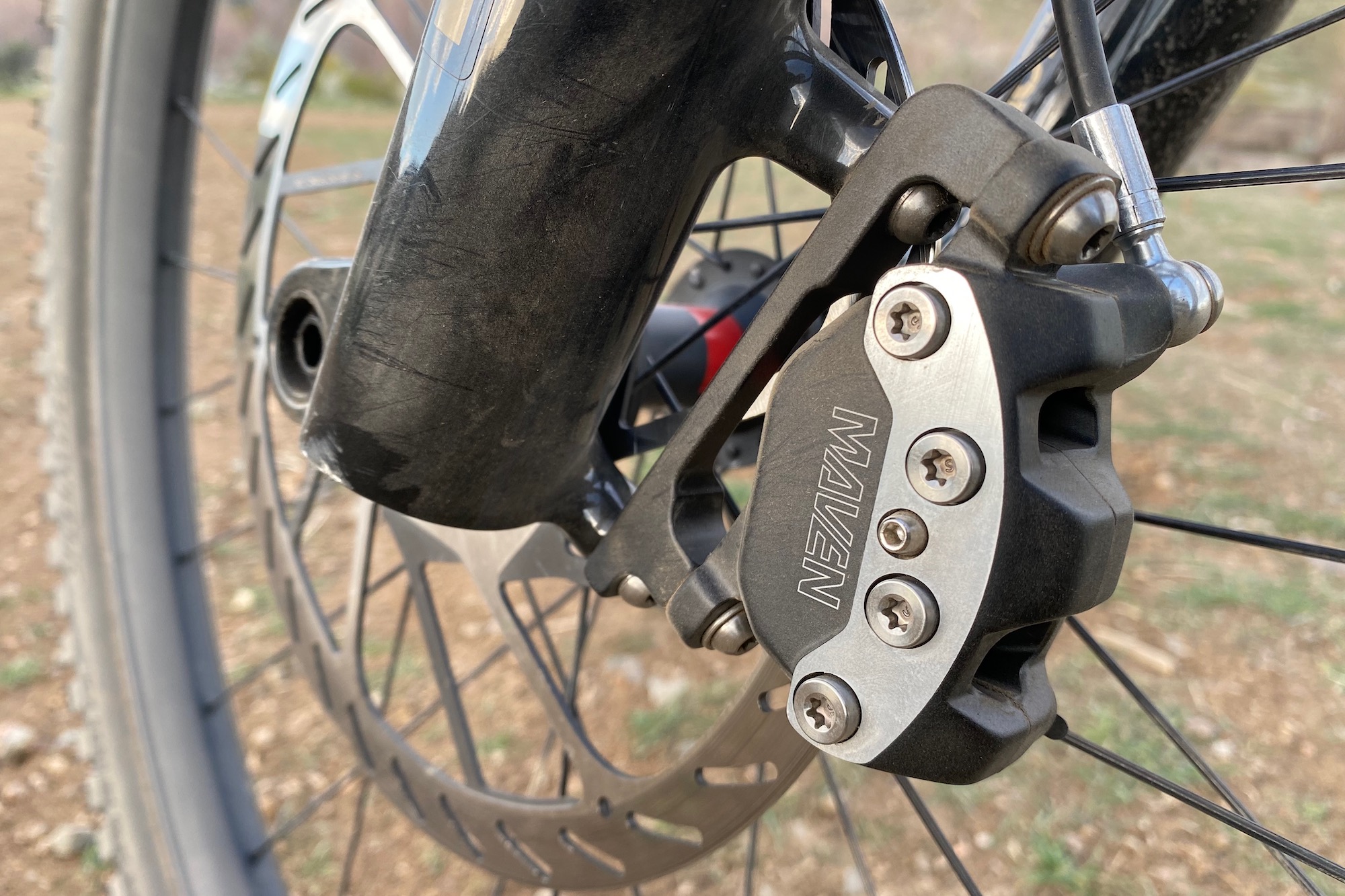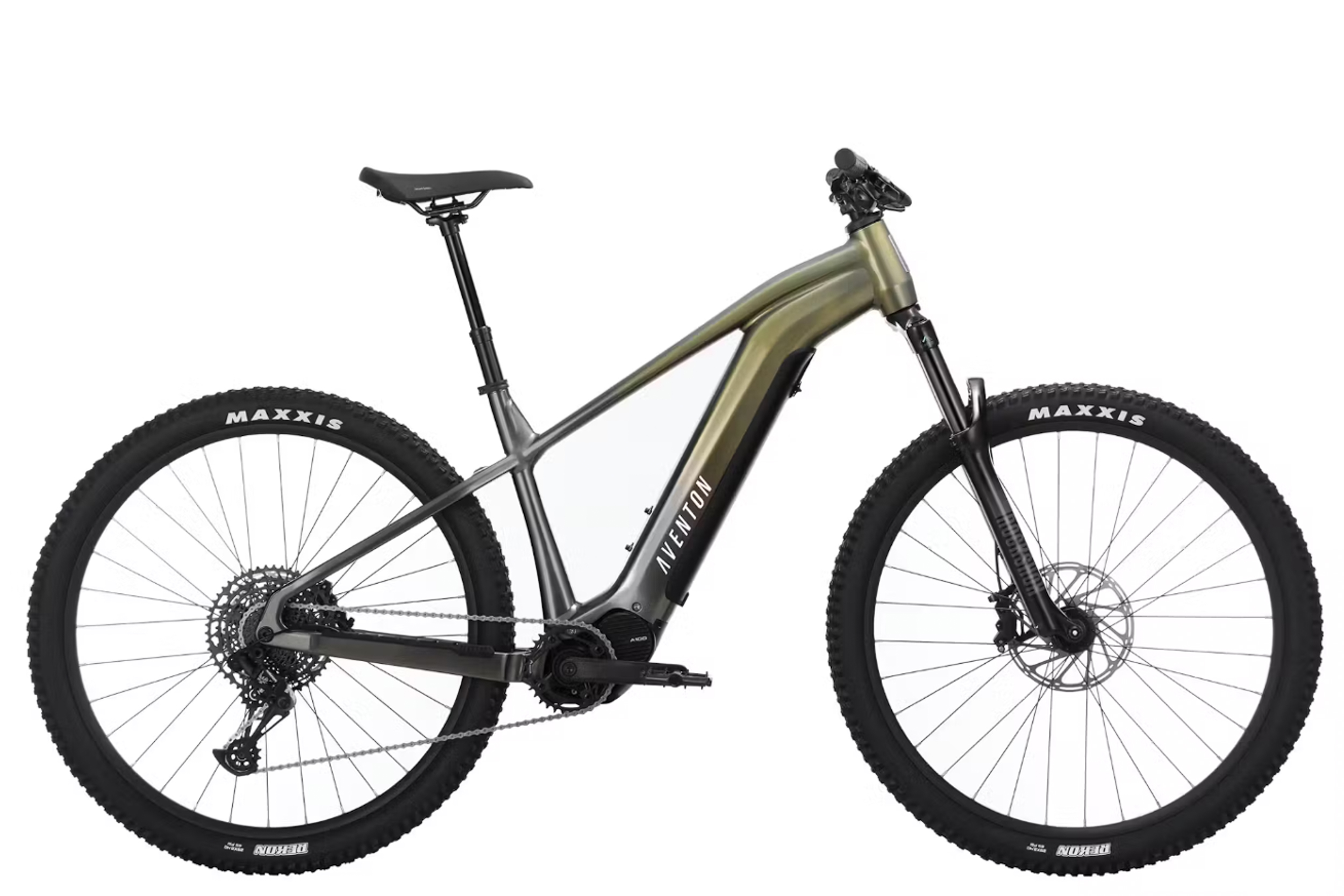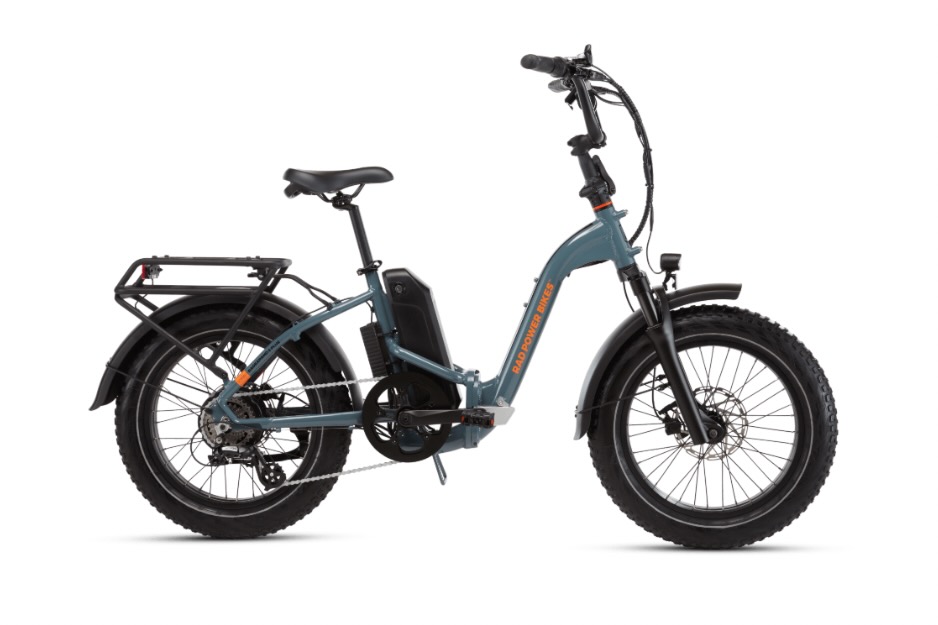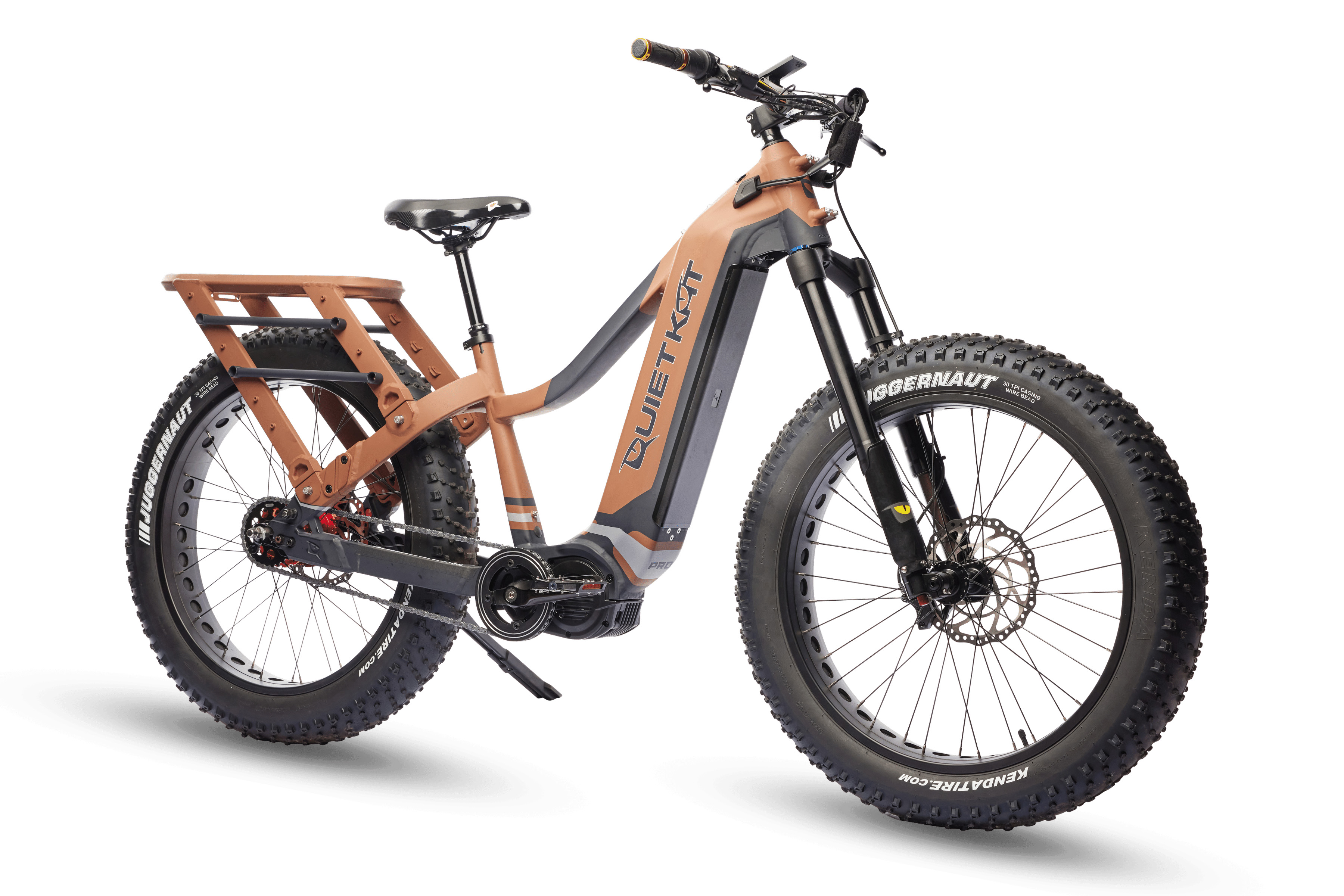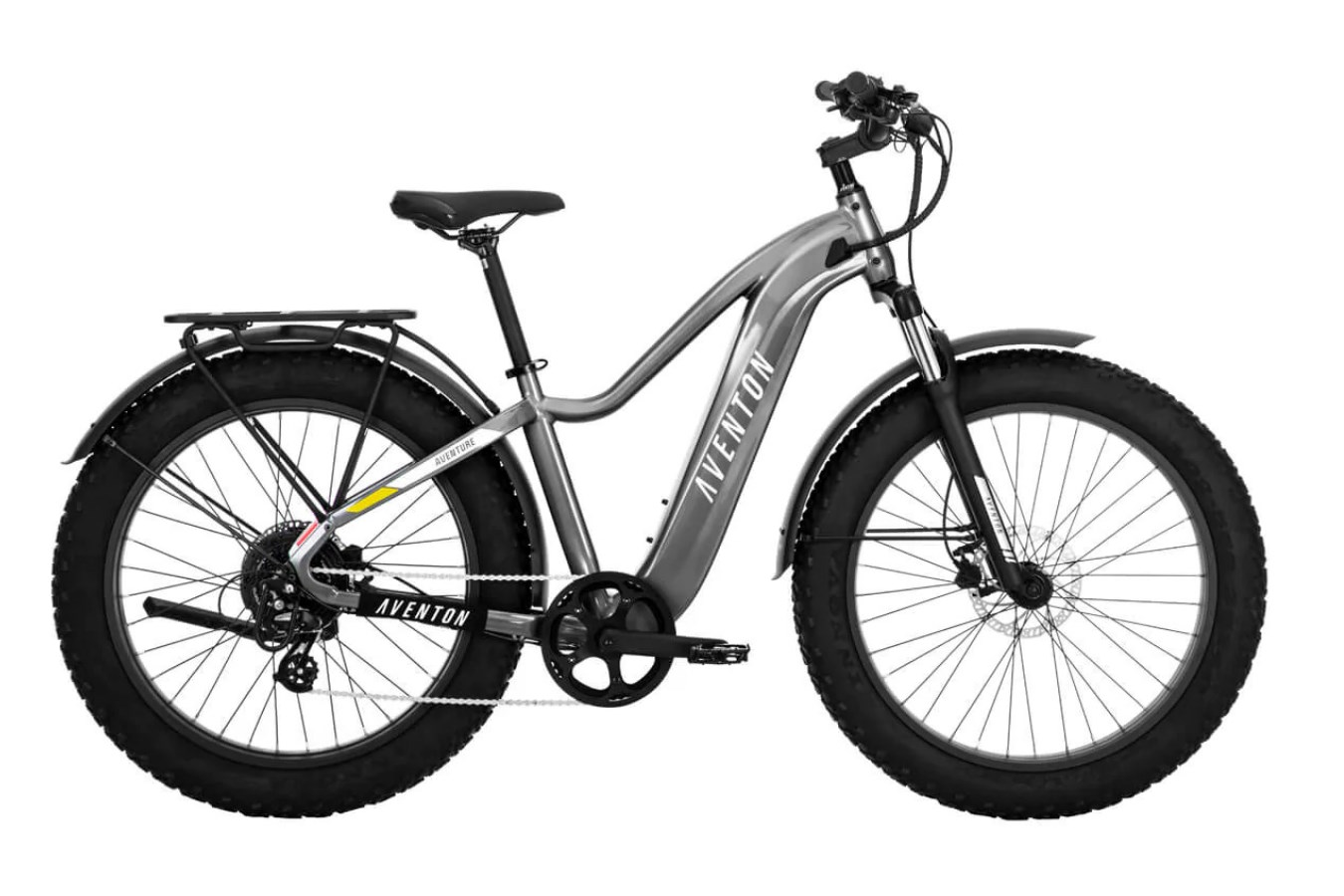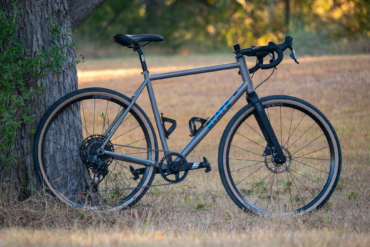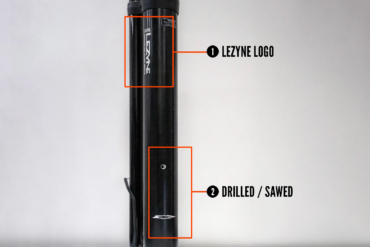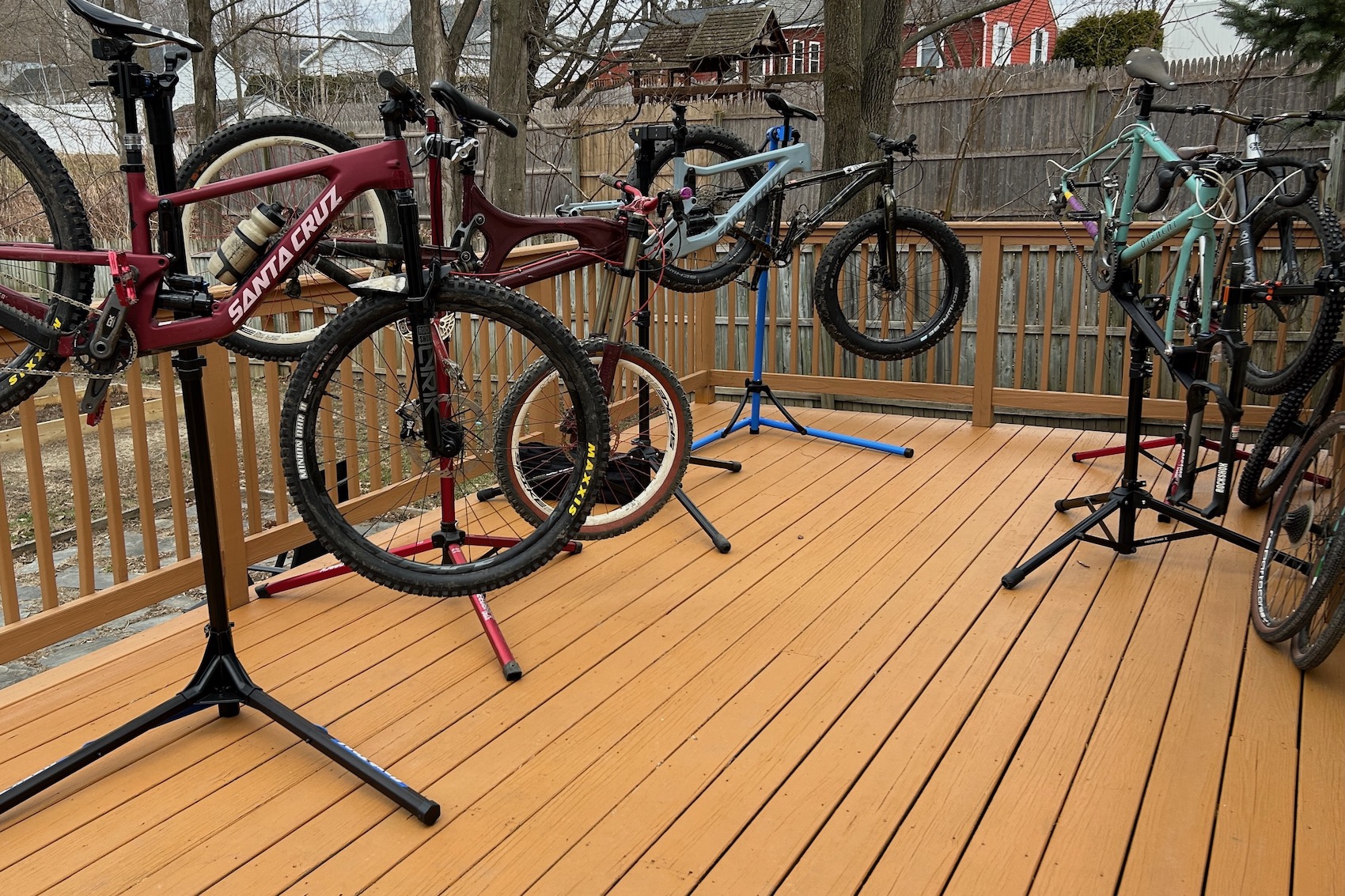Electric bikes have experienced meteoric growth in popularity, leading to plenty of options for all types of riding. From cargo bikes and commuters to mountain bikes and folding models, there’s an electric bike to suit every need and preference.
For several years and thousands of collective miles, our team has been testing all kinds of electric bikes. So, whether you’re looking for something to speed up your commute, haul kids or cargo, tackle trails, or venture off the beaten path, we’re confident our time and effort will help you narrow your search and choose the best electric bike for your unique needs.
Listed here are our favorite models across the various electric bike categories. Each entry has been thoroughly ridden and tested, with special attention to fit, feel, handling, power output, range, maintenance, and build difficulty. In our comprehensive buyer’s guide, we highlight the key aspects you need to consider in your purchase decision.
If you’re interested in learning more about specific types of electric bikes, check out our guides to electric cargo bikes, commuter bikes, e-bikes for hunting, and fat-tire bikes.
Editor’s Note: We updated this guide on April 17, 2025, with the addition of the brand new Specialized Turbo Levo 4, our pick for the best electric mountain bike.
The Best Electric Bikes of 2025
Specialized Globe Haul LT
- Class: 3
- Motor: 700W rear hub
- Battery size: 772Wh
- Wheel x Tire size: 20” x 3.5”
- Weight: 88 lbs., 3 oz.
- Length: 53.4 inches, wheelbase
- Carrying capacity: 441 lbs.
- Range (claimed): 60 miles
Pros
- Large carrying capacity
- Can haul three kids comfortably
- Has throttle for easier stop and go riding
- Fits multiple sized riders
Cons
- Long for even a longtail cargo bike
- Heavy
- More expensive than hub drive competition
Lectric XPedition Cargo eBike
- Class: 2 or 3 (can be changed in settings)
- Motor: 750W rear hub
- Battery Size: 672Wh (or 1,344Wh with dual battery)
- Wheel x Tire size: 20” x 3”
- Weight: Single battery: 68 lbs., Dual battery: 75 lbs.
- Length: 72 inches
- Carrying capacity: 450 lbs. total
- Range (claimed): Single battery: up to 75 miles, Dual battery: up to 150 miles
Pros
- Affordable
- No assembly required
- Dual battery option for massive range
- Comes with accessories that other brands charge extra for
- Large range of fit
Cons
- Handling can feel a bit twitchy at times
- Heavy with dual battery and accessories installed
Trek Allant+ 7S Gen 2
- E-Bike Class: 3
- Motor: Bosch Performance Line mid-drive
- Battery Size: 500 Wh
- Wheel x Tire Size: 27.5" x 2.4"
- Drivetrain: Shimano Cues 9-speed
- Suspension: 63 mm travel fork
- Weight: 58 lbs.
Pros
- Excellent component specification
- Smooth, refined power delivery from mid-drive motor
- Streamlined, sleek looks
- Smooth, stable ride
- Supension fork, fenders, lights, and rear rack included
- Comes in 3 frame sizes
Cons
- Higher price
- Smaller battery than some
Rad Power Radster Road
- E-Bike Class: 3
- Motor: 750W rear hub
- Battery size: 720 Wh
- Wheel x Tire Size: 29" x 2.2"
- Drivetrain: 8-speed
- Suspension: 80 mm suspension fork
- Weight: 74 lbs.
Pros
- Smooth, stable handling
- Great range
- Capable of Class 3 speeds up to 28 mph
- Great e-bike controls and display
- Comes with rear cargo rack, lights, and fenders
- Reasonable price
Cons
- Very heavy
- Affordable but still not cheap
Specialized S-Works Turbo Levo 4
- Frame material: FACT 11m carbon
- Suspension travel: Rear – 150 mm, front – 160 mm
- Head tube angle: 64.5 (adjustable ±1 degree)
- Wheel size: MX: 29” front, 27.5” rear
- Motor: Specialized 3.1 S-Works, 111 Nm torque (standard 3.1, 101 Nm)
- Battery: 840Wh (optional 280Wh range extender)
- Weight: 52 lbs., 3 oz. (S4 S-Works build)
Pros
- Quiet motor
- Highly and easily tunable pedal assistance
- Numerous meaningful geometry adjustments
- Massive battery, great range
- In-frame storage
Cons
- Heavy-ish
- Expensive (especially the S-Works version)
Aventon Ramblas
- E-Bike Class: 1
- Motor: Aventon a100 mid-drive, 100 Nm torque
- Battery Size: 708 Wh
- Wheel x Tire Size: 27.5" x 2.4" (S), 29" x 2.4" (M, L, XL)
- Drivetrain: SRAM NX 12-speed
- Suspension: 130 mm travel fork
- Weight: 54 lbs. (L)
Pros
- Affordable
- Mid-drive motor has handling advantages
- Comes with dropper post
- Simple to upgrade
Cons
- Spring fork is not tuneable and has no lockout
- Battery cover can rattle
Rad Power RadExpand 5 Plus
- E-Bike Class: 2
- Motor: 750 W rear hub
- Battery Size: 720 Wh
- Wheel x Tire Size: 20" x 4.0"
- Drivetrain: Shimano 7-speed
- Suspension: 50 mm fork
- Weight: 72.5 lbs.
Pros
- Smooth, comfortable ride
- Great handling for a folding bike
- Power delivery is smooth
- Safe Shield battery
- Good controls and display
- Wide knobby tires can handle a wide range of surfaces
Cons
- Heavy
- Not suitable for riders over 5'10"
- Lower cargo weight capacity
QuietKat Apex XD
- Weight: 70 lbs. without battery
- Motor: 1,000 W VPO mid-drive, 200 Nm torque
- Battery: 2 options: 720 Wh or 1,440 Wh
- Range (claimed): 15 Ah battery: up to 45 miles, 30 Ah battery: up to 90 miles
- Suspension: 120 mm inverted suspension fork
- Wheel x Tire Size: 26" x 4.8"
- Drivetrain: 5-speed internal automatic transmission
- Load capacity: 325 lbs.
Pros
- Super powerful motor
- Front suspension
- Integrated rear rack carries up to 100 lbs.
- Dropper post for better handling
- Internal drivetrain reduces potential for mechanical issues
- 2 battery size options
- 2 frame style options
Cons
- Heavy
- Expensive
Aventon Aventure.2
- E-bike Class: 3
- Motor: 750W rear hub
- Battery: 720 Wh
- Wheel x Tire Size: 26" x 4"
- Drivetrain: Shimano 8-speed
- Suspension: 80 mm fork
- Weight: 77 lbs.
Pros
- Very reasonable price
- High weight capacity
- Easy to ride
- Comes with fenders and a rear rack
- Step-over and step-thru frame options
Cons
- Pedal assistance is a little jumpy compared to mid-drive systems
- Shorter range than some other options
Woom UP E-Bike
- Range: N/A
- Class: I
- Throttle: No
- Drivetrain: Sram NX
- Carrying Capacity: 160 lbs.
- Weight: 35.6 lbs.
- Surfaces: Single-track dirt, cross-country travel, not made for enduro/big jumps
Pros
- Lightweight
- Can grow with your kids
- Motor assist stops at 12 mph, making it safer for your kid and letting them work more
Cons
- Price tag
- Motor assist stops at 12 mph which could be annoying for little shredders
Electric Bikes Comparison Chart
| Electric Bike | MSRP | Bike Type | E-Bike Class | Motor | Battery | Range (claimed) | Throttle | Weight | Surfaces |
|---|---|---|---|---|---|---|---|---|---|
| Specialized Globe Haul LT | $3,500 | Cargo | 3 | 700 W rear hub | 772 Wh | up to 60 miles | Yes | 88 lbs. | Paved, smooth gravel |
| Lectric XPedition | $1,695 | Cargo | 2 or 3 | 750 W rear hub | 672 Wh (dual battery option) | up to 60 miles (single battery) | Yes | 75 lbs. | Paved |
| Trek Allant+ 7S Gen 2 | $3,850 | Commuter | 3 | Bosch Performance Line mid-drive | 500 Wh | not specified | No | 58 lbs. | Paved |
| Rad Power Radster Road | $2,199 | Commuter | 3 | 750 W rear hub | 720 Wh | 65+ miles | Yes | 74 lbs. | Paved |
| Specialized Turbo Levo 4 | $8,000-13,500 | MTB | 1 | Specialized 3.1 | 840 Wh | 30-45 miles | No | 52.2 lbs. | MTB trails |
| Aventon Ramblas | $2,899 | MTB | 1 | Aventon a100 mid-drive | 708 Wh | up to 80 miles | No | 54 lbs. | Trails, dirt, gravel |
| Rad Power RadExpand 5 Plus | $1,899 | Folding | 2 | 750 W rear hub | 720 Wh | 20 to 60 miles | Yes | 72.5 lbs. | Paved, gravel, smooth dirt trails |
| QuietKat Apex XD | $6,350-7,000 | Hunting, fat tire | 1, 2, 3, unlimited | 1,000 W VPO mid-drive | 720 or 1,440 Wh | up to 90 miles (1,440 Wh battery) | Yes | 70 lbs w/o battery | All |
| Aventon Aventure.2 | $1,999 | Fat tire | 3 | 750 W rear hub | 720 Wh | up to 60 miles | Yes | 77 lbs. | All |
| Woom UP E-Bike | $3,799 | Kids | 1 (15.5 mph max) | FAZUA Ride 50 mid-drive | 250 Wh | not specified | No | 36 lbs. | Paved, dirt, gravel |

How We Tested the Best Electric Bikes
The team at GearJunkie loves riding bikes, and we’ve been testing and reviewing them for the past decade or so. We’re lucky to get our hands on a wide range of electric bikes, including cargo models, commuters, e-MTBs, fat-tire, hunting, and folding models. For the purposes of this guide, we’ve compiled our favorite electric bikes across all categories.
This review was originally spearheaded by frequent GearJunkie contributor, adventure racing champion, business owner, and mother of two, Chelsey Magness. A former 24-hour mountain biking world champion, Magness knows bikes inside and out and has a large pool of adventurous friends and fellow riders to help her test bikes.
Magness is based in the adventurous outdoor town of Bend, Ore., with its nationally renowned bike infrastructure and culture, which includes hundreds of miles of trails, dirt roads, gravel paths, and paved bike lanes. From school drop-offs to overloaded grocery runs, geocaching adventures, night-time commuting, pub crawls, and lots and lots of just riding for fun, Chelsey made sure to put each bike through its paces.
Since then, we’ve added a number of models tested and reviewed by GearJunkie Editor Jeremy Benson and other members of our editorial team. Benson has been professionally testing and reviewing bikes of all kinds for the past 8 years.
He’s tested over 50 electric bikes of all kinds, from budget-friendly folding models to top-of-the-line e-MTBs. He’s spent countless hours assembling bikes, assessing power delivery, and analyzing the comfort and handling of electric bikes, and he’s developed a keen sense of what separates the good from the best.
Most of the bikes included on this list are also covered in our category-specific guides, including the best electric cargo bikes, the best e-bikes for hunting, commuter bikes, and the best fat tire bikes. We’re continually testing the latest and greatest products, and as new electric bikes hit the market, we’ll give them a shot to ensure this list always includes the best of the best.
Buyer’s Guide: How to Choose the Best Electric Bike
As electric bikes gain popularity and new brands enter the market, choosing the best model for you can seem daunting. Shopping for a standard human-powered bike is already a complex process of sifting through specs and comparing components and prices. Electric bikes — with their batteries, motors, and throttles — give potential buyers a lot to consider.
In this comprehensive buyer’s guide, we explain all the variables and terminology you need to make an informed purchase. Once your primary bike needs are met, check out our guides on accessories like protective bike helmets, secure bike locks, and hitch bike racks to transport your new ride.
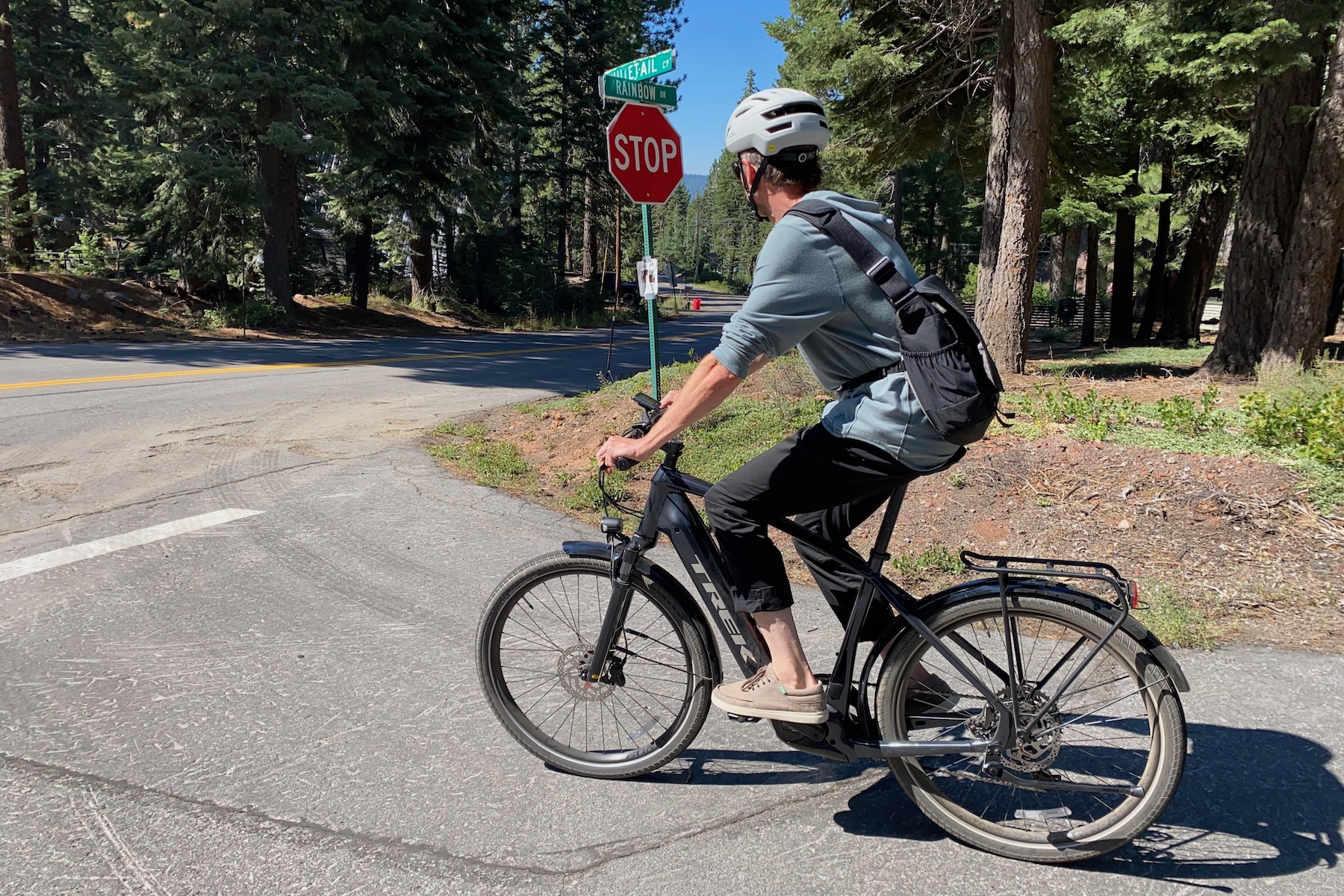
Key Terms to Know
Pedal-Assist
Pedal assist is the primary electric bike mode. Also known as PAS (pedal assist system), pedal assist combines the active engagement of traditional cycling with the added boost of support from the electric motor.
In pedal assist mode, a drivetrain sensor monitors the revolution of the pedals and engages the motor accordingly. With battery-powered assistance, people are able to enjoy longer rides on more challenging terrain with less physical output — or the same physical output at a higher speed. Pedal assist is like having a strong tailwind at your command.
Many e-bikes have various PAS settings. In most cases, the greater the setting or level, the more assistance you’ll get from the motor. Low settings will feel much like riding a traditional bike, and high settings will have the bike doing more of the work. As more pedal assist is activated, the battery will deplete faster.
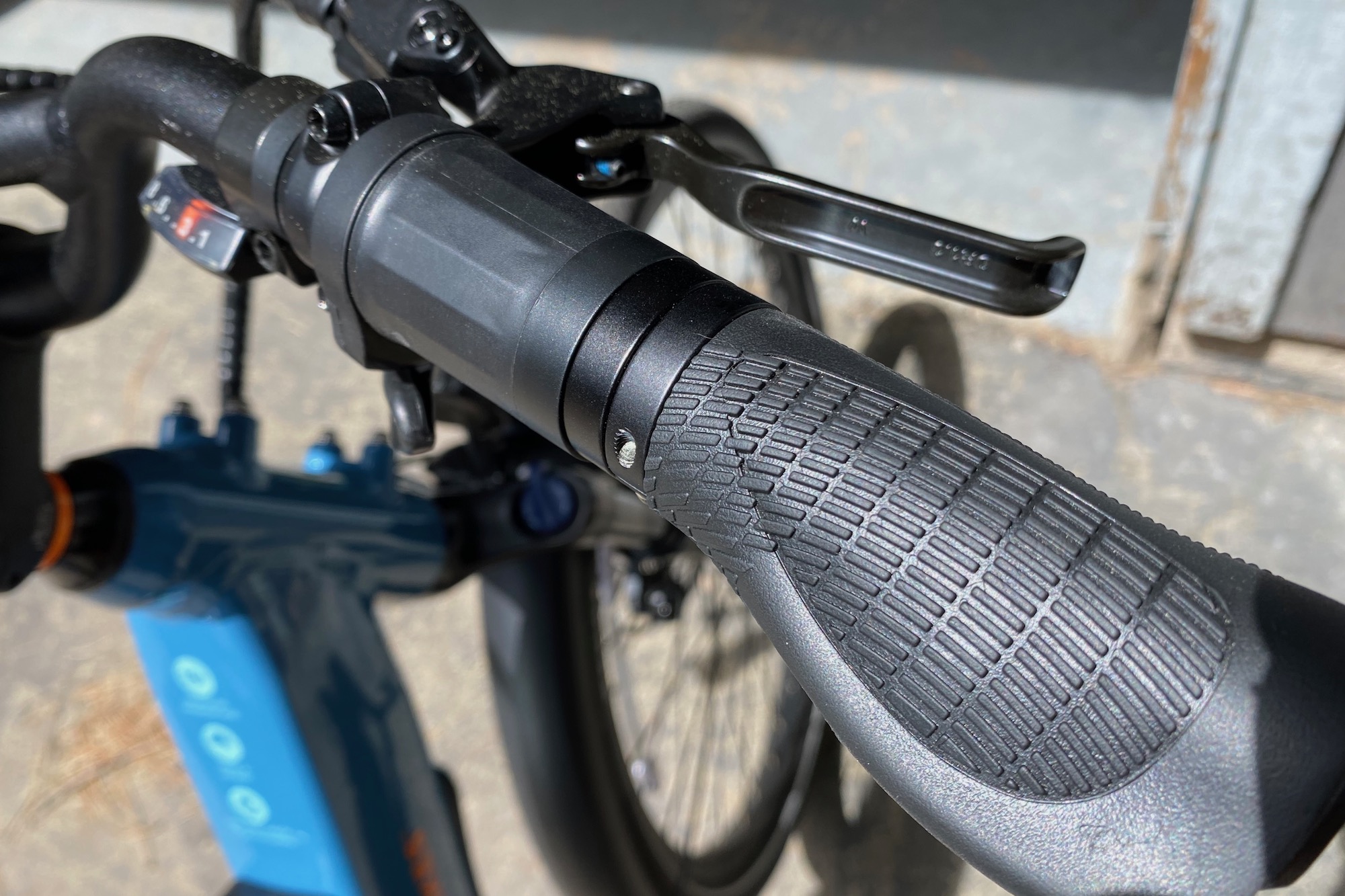
Throttle
Many electric bikes come with a throttle function, so the bike can propel you forward under full electric power without the need to pedal. An electric bike throttle works much like a motorcycle or electric scooter. Throttles typically come in the form of a twist grip or a thumb paddle.
Since many electric bikes are heavy and/or you might be hauling some cargo, having a throttle on an electric bike can be helpful for getting started from a complete stop. Likewise, they can be nice for lazy cruising if you don’t feel like pedaling.
The presence of a throttle is part of what determines an e-bike’s class — which we explain later in this guide.
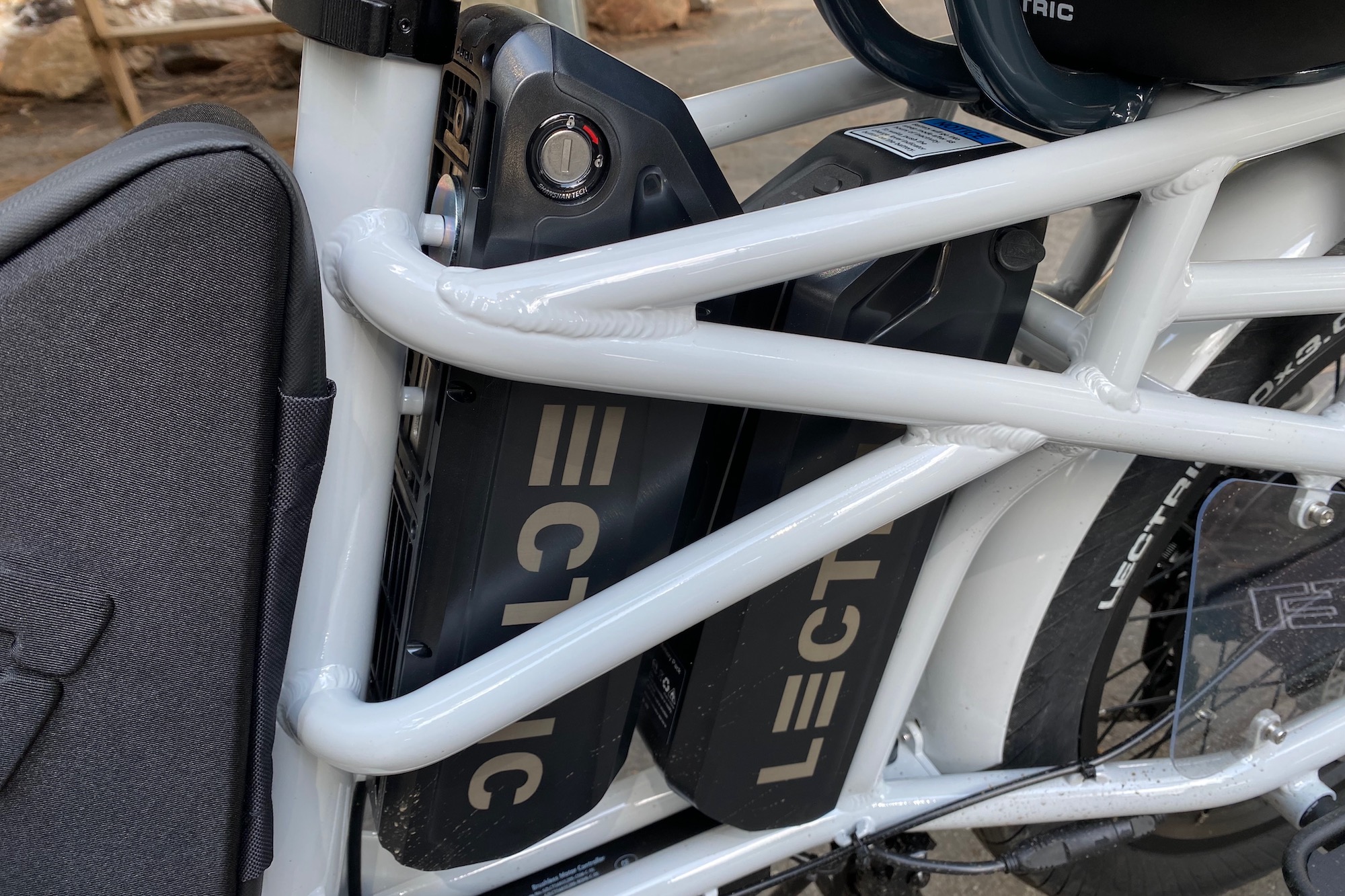
Range
An electric bike’s range is the total distance it will go before the battery is depleted. Numerous factors affect range, including battery capacity, pedal assist level, throttle usage, terrain, air temperature, and manual input from the rider’s pedaling.
In reality, most e-bikes fail to live up to their advertised range. The manufacturer will claim a range of 80 or 90 miles, and though those numbers may be technically reachable under very specific conditions, you likely won’t manage them during real-world use.
Ultimately, a bike’s range entirely depends on how much the rider pedals. If the rider pedals at 100% effort all the time, the range will be much greater than if the rider relies on the motor to do most of the work.
High-end electric bikes don’t necessarily have better ranges than more affordable options. Larger, heavier batteries have greater capacity, but you won’t find them on lightweight performance-minded models. There are many styles of e-bikes — from cargo to gravel to commuter — and all of them must deal with the challenge of mounting a heavy battery onto a bike frame.
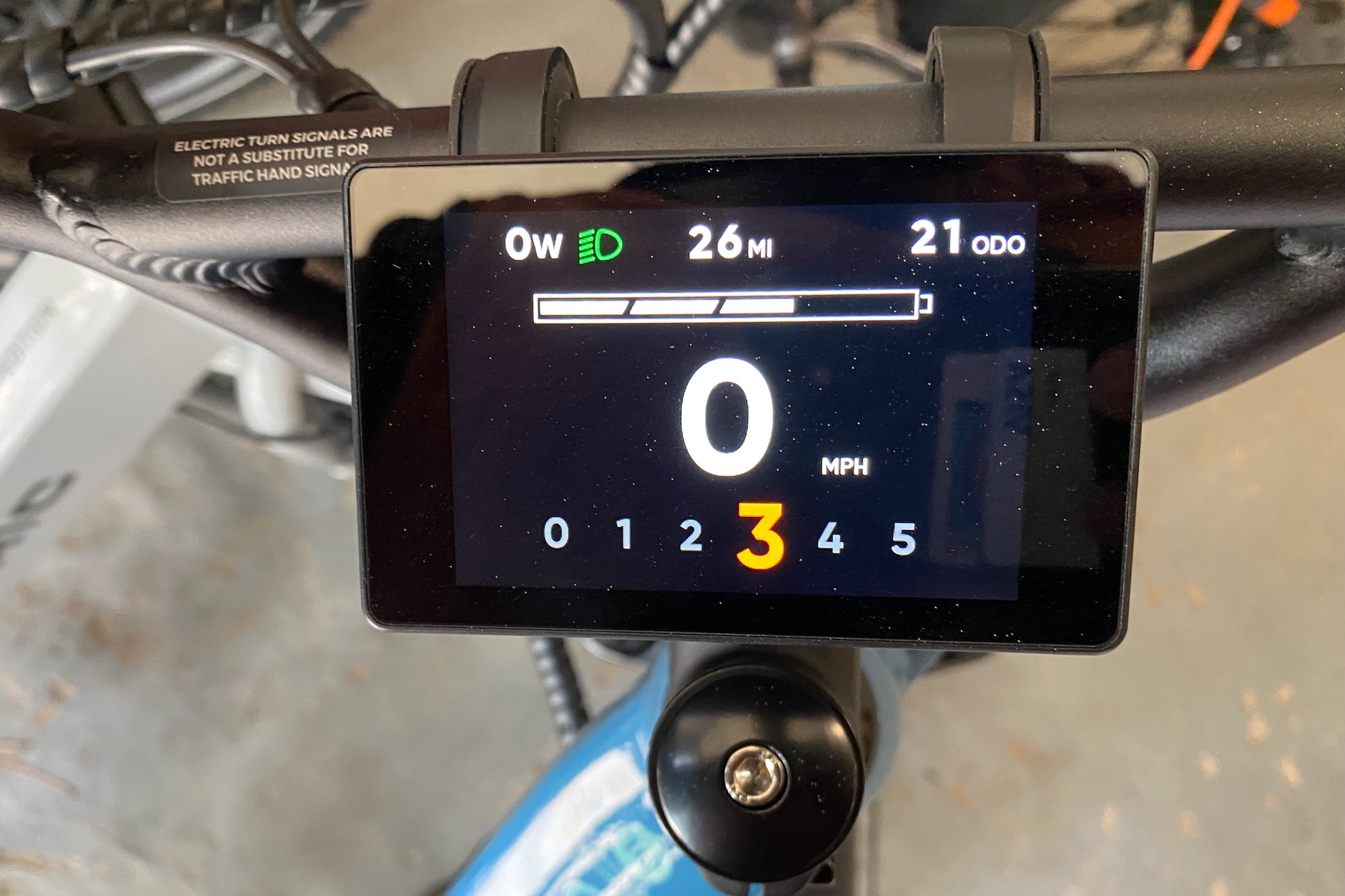
Controls and Display
Like the instrument cluster in a vehicle’s dashboard, an electric bike’s display informs the user of facts and figures related to their ride and their bike’s performance. Most e-bike displays are small 1-3-inch screens that show relevant information like pedal assist mode, current speed, and remaining battery life.
An electric bike’s controls typically come in the form of a control unit that is mounted on the handlebar by the left grip. This can usually be reached by the thumb to change the pedal assist mode, turn lights on or off, and, in some cases, control the blinkers. Often, the bike’s settings — top speed, data units, data fields, etc. — can be adjusted using the controls and display.
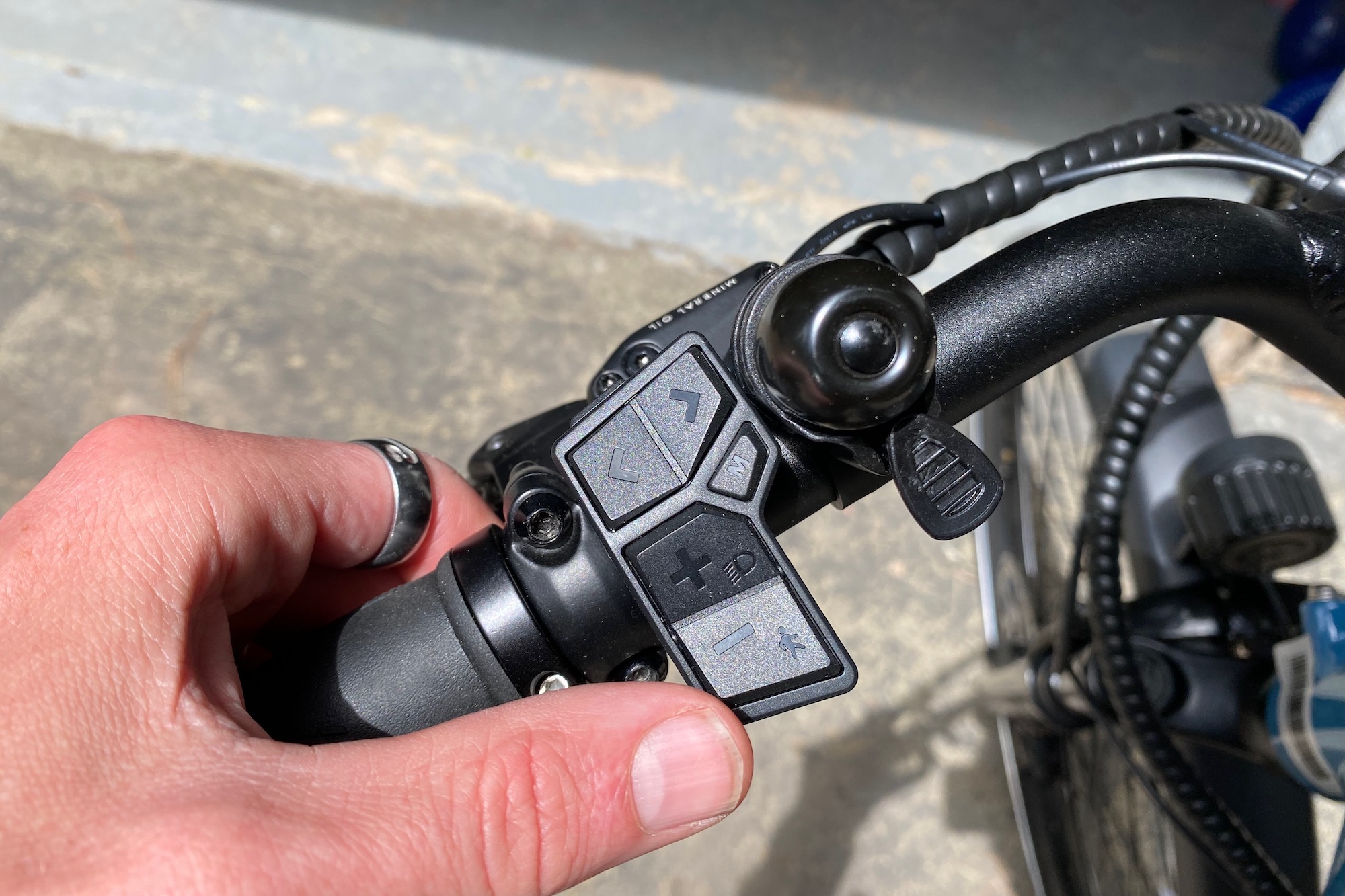
Types of Electric Bikes: What Bike Is Best for Your Riding Style?
Just like regular bicycles, electric bikes come in a variety of styles, each with a different kind of rider in mind. Every bike is built for an intended application, which in turn dictates its components and design. For the most part, electric bikes lean into the commuter, cargo, mountain, folding, fat tire, or hunting categories. It’s worth mentioning that many electric bikes work for a range of applications beyond their designated category.
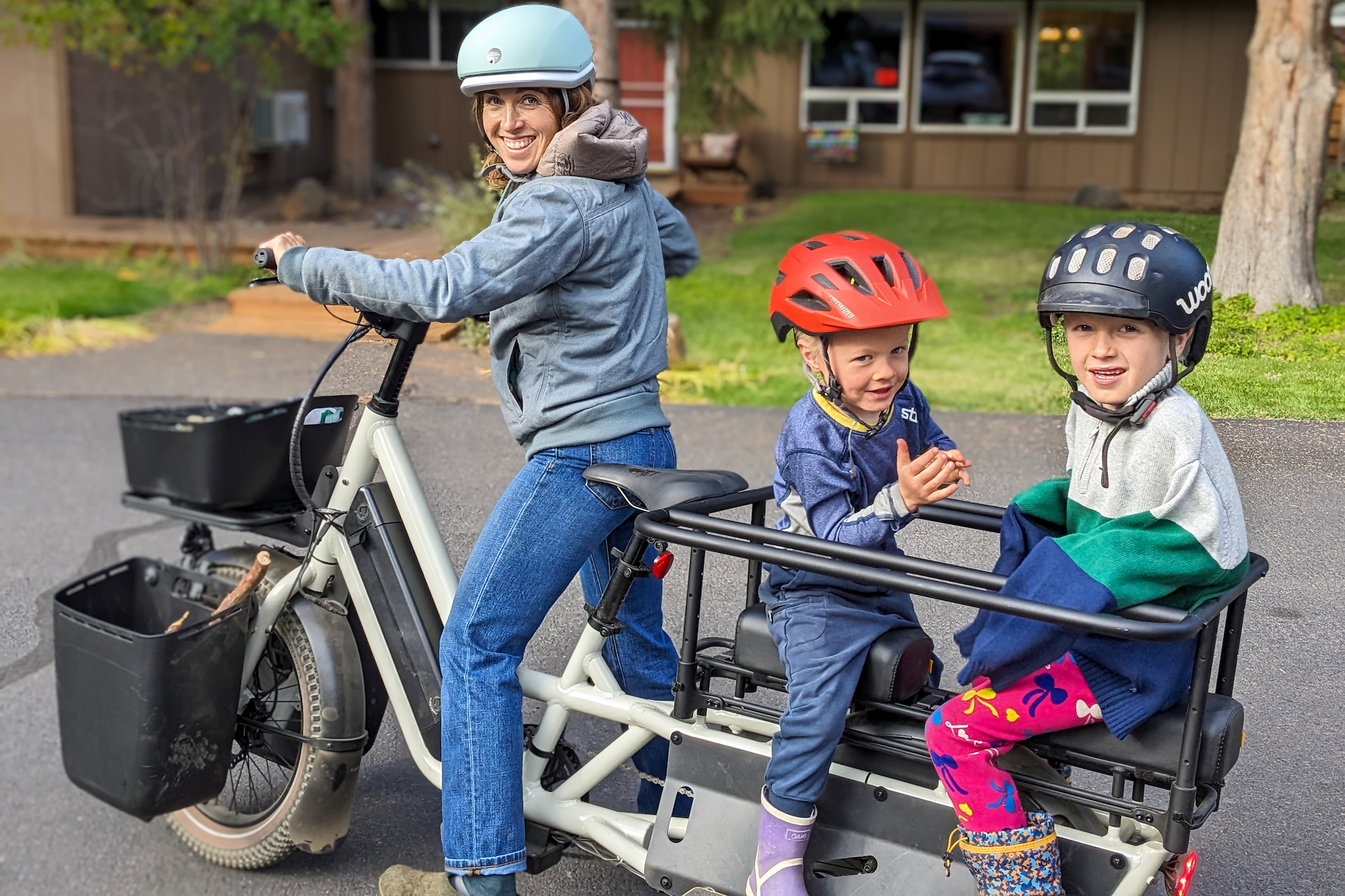
Electric Cargo Bikes
Gas is expensive, and many families are looking to electric bikes as a potential car replacement now that they’ve become reliable and affordable. Electric cargo bikes are the ultimate stand-in for a full-size vehicle. Bikes in this class offer storage for standard day-to-day errands. With the right cargo electric bike, you can make a run to the grocery store, pick up your laundry, and even take your kid to school.
On this list, Specialized Globe Haul LT and the Lectrc XPedition are standout family cargo bikes. Both models are available with modular accessories that can be customized to fit the rider’s lifestyle From two-seat kid haulers to large front racks, these bikes are viable alternatives to a car payment.
Because electric cargo bikes tend to be large and heavy, many have options for multiple batteries, which may be a good option if you’re planning to consistently haul a lot of weight or travel longer distances. Cargo bikes won’t offer the speed of performance models or the off-road capabilities of mountain bikes, but that’s not what they’re made for.
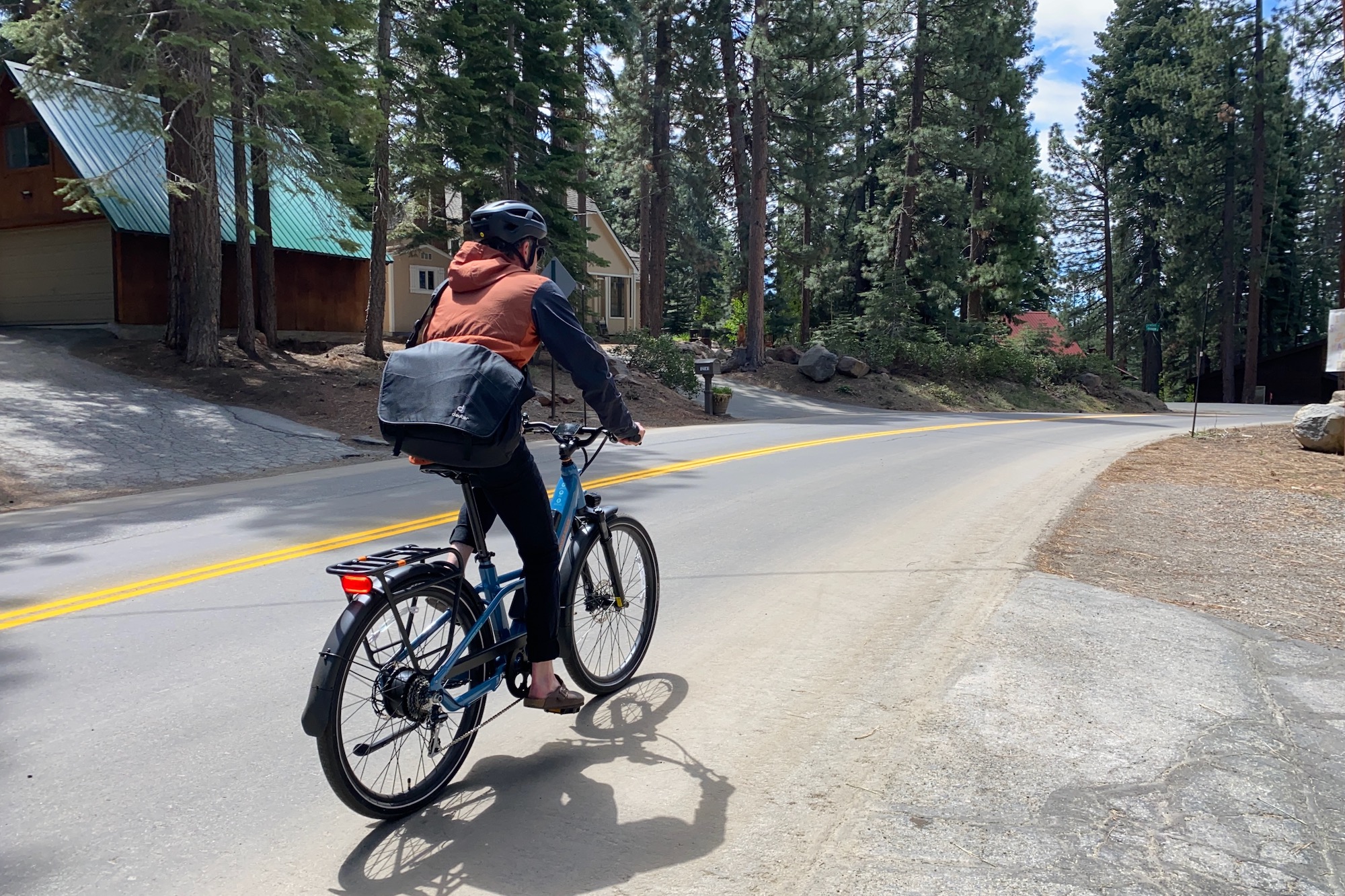
Electric Commuter Bikes
Electric commuter bikes are built to carry their rider from point A to point B. These bikes tend to be comfortable, streamlined, and relatively lightweight. On this list, the Trek Allant+ 7S Gen 2 and the Rad Power Radster Road are great commuter options. Both bikes have at least eight gears, a comfortable saddle, and a rear storage rack. Gears aren’t strictly necessary on an electric bike, but they do help to expand your range, and they’re quite handy in hilly areas.
Electric commuter bikes are defined by reliable components and utilitarian styling. In most cases, commuter bikes are designed for paved surfaces.
Electric Mountain Bikes
Electric mountain bikes (e-MTBs) prioritize recreation over day-to-day utility. Just like traditional mountain bikes, electric bikes in this category are built for slashing singletrack and crushing cross-country circuits. Standard features include full suspension, dropper seat posts, and large rugged tires.
On this list, the Specialized Turbo Levo 4 is a beast of a mountain bike. It has all of the performance, features, and components you’d expect from a Specialized model, plus a reliable frame-integrated battery and a mid-drive motor that cranks out an incredible 111 Nm of torque. For a more affordable entry point to e-MTBs, the Aventon Ramblas is a solid option to consider at $2,899.
If you love mountain biking but could use a little help on the climbing segments, electric mountain bikes are a glorious solution.
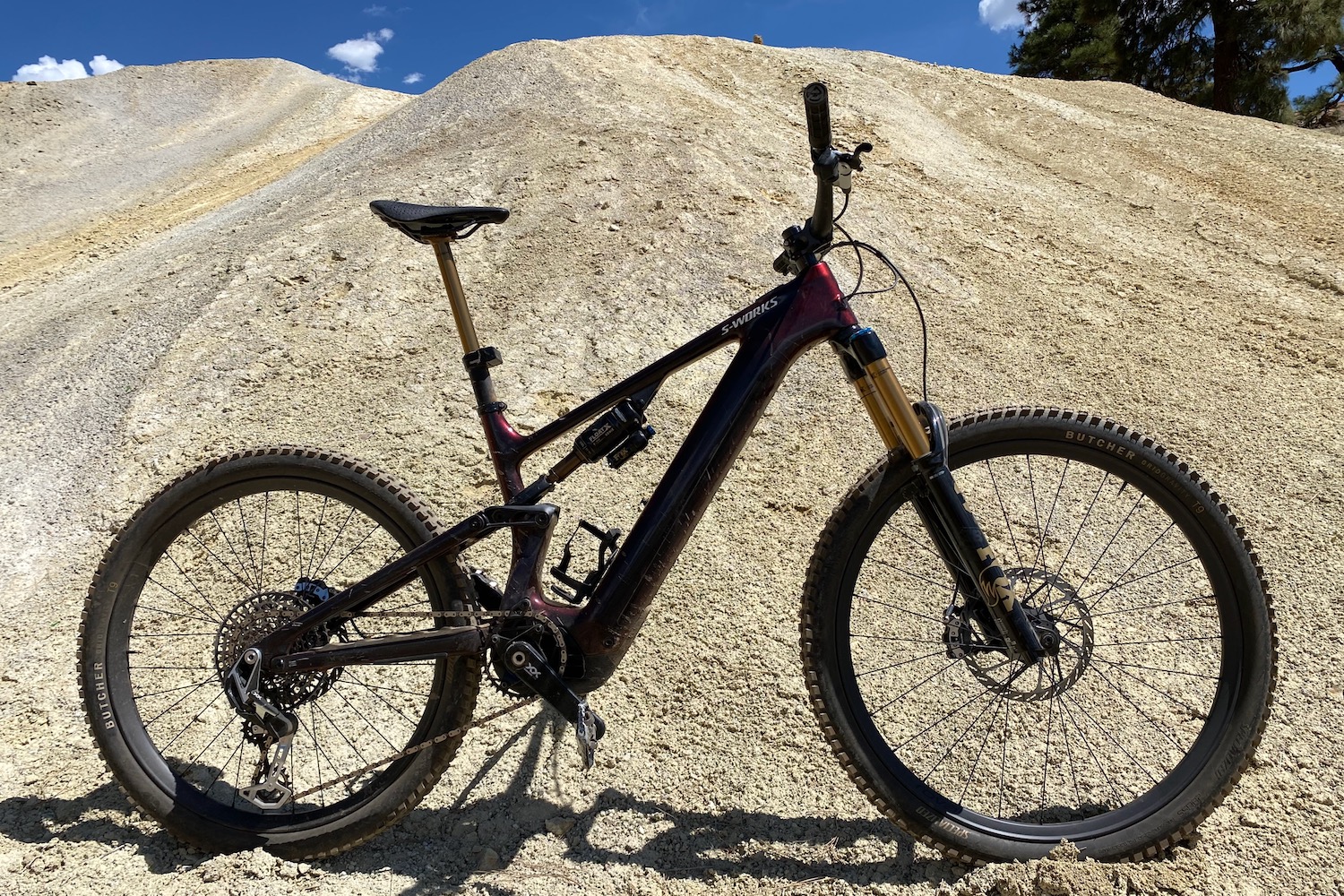
Folding Electric Bikes
Folding electric bikes are exactly what they sound like. These bikes have specially designed frames that allow them to fold to reduce their size for storage or transport. In addition to the frame folding, the handlebar can often be folded down as well, reducing the size of these bikes to less than half.
Folding electric bikes are a good option for those who are short on storage space, as the compact folded size often makes it possible to squeeze them into tighter spaces like a closet or shed. Similarly, they can be more easily fit into the trunk of a vehicle or into an RV if you’re heading out on a trip.
There are lots of folding e-bikes on the market these days, but our most recent favorite is the Rad Power RadExpand 5 Plus. This bike may fold in half, but it still performs when the rubber meets the road, gravel, or dirt.
The main drawback of folding electric bikes is that the design typically requires the use of smaller wheels — usually around 20 inches — which impacts the handling feel. And despite their ability to fold down small, they are often still fairly heavy, so lifting them into a vehicle isn’t always the easiest thing to do.
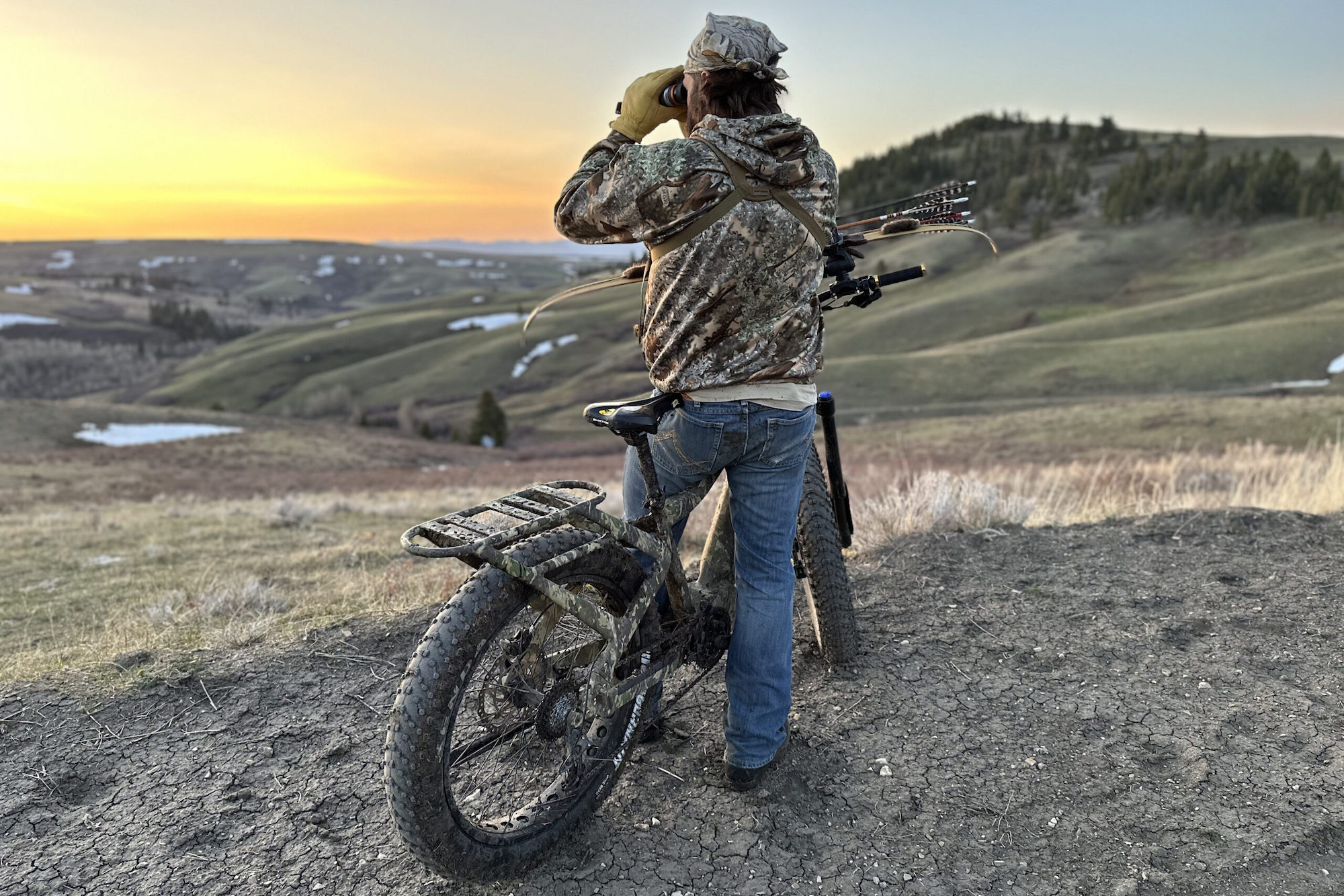
E-Bikes for Hunting
Electric bikes have seen growing popularity and acceptance as a means of transportation for many hunters. They are lighter, quieter, and less expensive than many of the more traditional gas-powered options like ATVs and side-by-sides. Still, they can help you cover miles, carry your gear, and get to many far-off places in the field with less effort.
Several brands produce e-bikes specifically for hunting, like QuietKat, Rambo Bikes, and Bakcou. Hunting e-bikes are generally very rugged, with fat tires, powerful motors, and overbuilt frames with fairly high weight capacities for hauling you and all of your gear. They also usually come with camo paint jobs.
Classes of Electric Bikes
Electric bikes are grouped into three classes. The class system is important to know about because different states, regions, and trails have different regulations on where electric bikes can be ridden based on their e-bike class. There are fundamental differences between each class. Many bikes now provide the option to be configured as class 1, 2, or 3 by making adjustments to the top speed through the controls.
- Class 1: Class 1 electric bike motors only engage when the rider is pedaling. Once these bikes hit 20 mph, the motor will stop assisting. Class 1 models are ideal for cyclists who want a more traditional sans-throttle experience.
- Class 2: Class 2 electric bikes do have a throttle, but it tops out at 20 mph. The pedal assist modes in this class will also cease at 20 mph. In some jurisdictions, class 2 is the most powerful legal option. Class 2 models may also be a good option for riders who don’t wish to travel at higher speeds.
- Class 3: Class 3 electric bikes have pedal assist and may also have throttle capabilities. Motors on class 3 models will power riders up to 28 mph using pedal assist. If equipped with a throttle, that will max out at 20 mph. In recent years, class 3 electric bikes have become increasingly popular as vehicle replacements.
We highly recommend doing some research into the e-bike regulations for the roads, paths, and trails where you plan to ride so you can choose an electric bike that aligns with them.
Types of Motors: Rear Hub vs. Mid-Drive
The vast majority of electric bikes are powered by either a rear hub motor or a mid-drive motor. Generally speaking, rear hub motors are found on more affordable bikes, while mid-drive systems cost more and tend to be found on higher-end models.
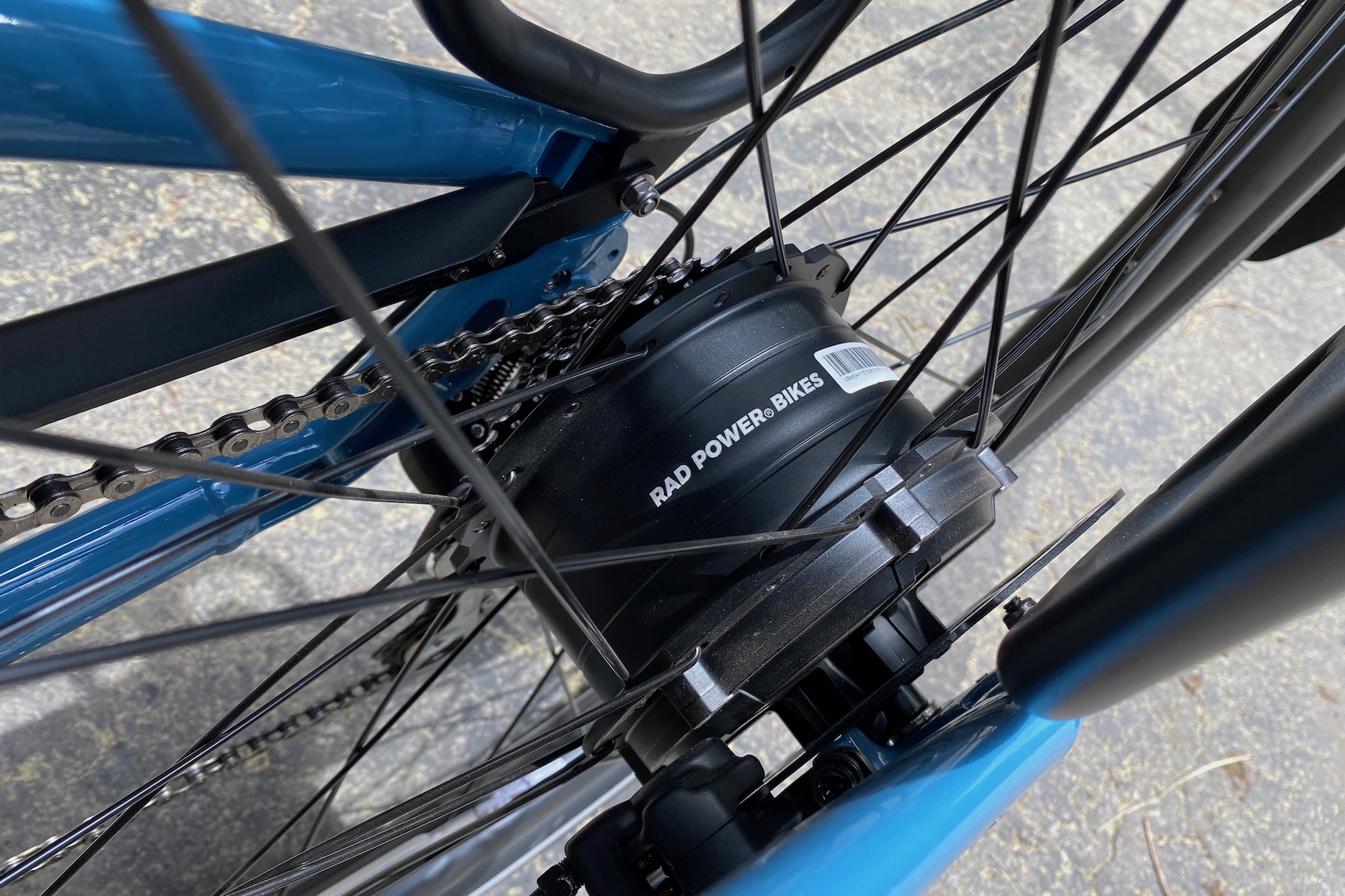
Rear Hub
Rear hub motors are housed in the hub of the bike’s rear wheel. When engaged, rear-hub motors deliver power directly at the wheel and create the sensation of being pushed along from behind. Hub motors are simpler in design compared to mid-drives. They are less expensive to produce and are typically found on affordable to mid-priced electric bikes.
Traditionally, they have been criticized for jumpier and less refined power delivery, although many recent models feature more advanced torque sensors, which is narrowing the performance gap between them and mid-drives. Most bikes that have throttles have rear hub motors, as the majority of mid-drive systems don’t allow for them. A slight downside: rear hub motors create complications if you ever need to remove the rear wheel
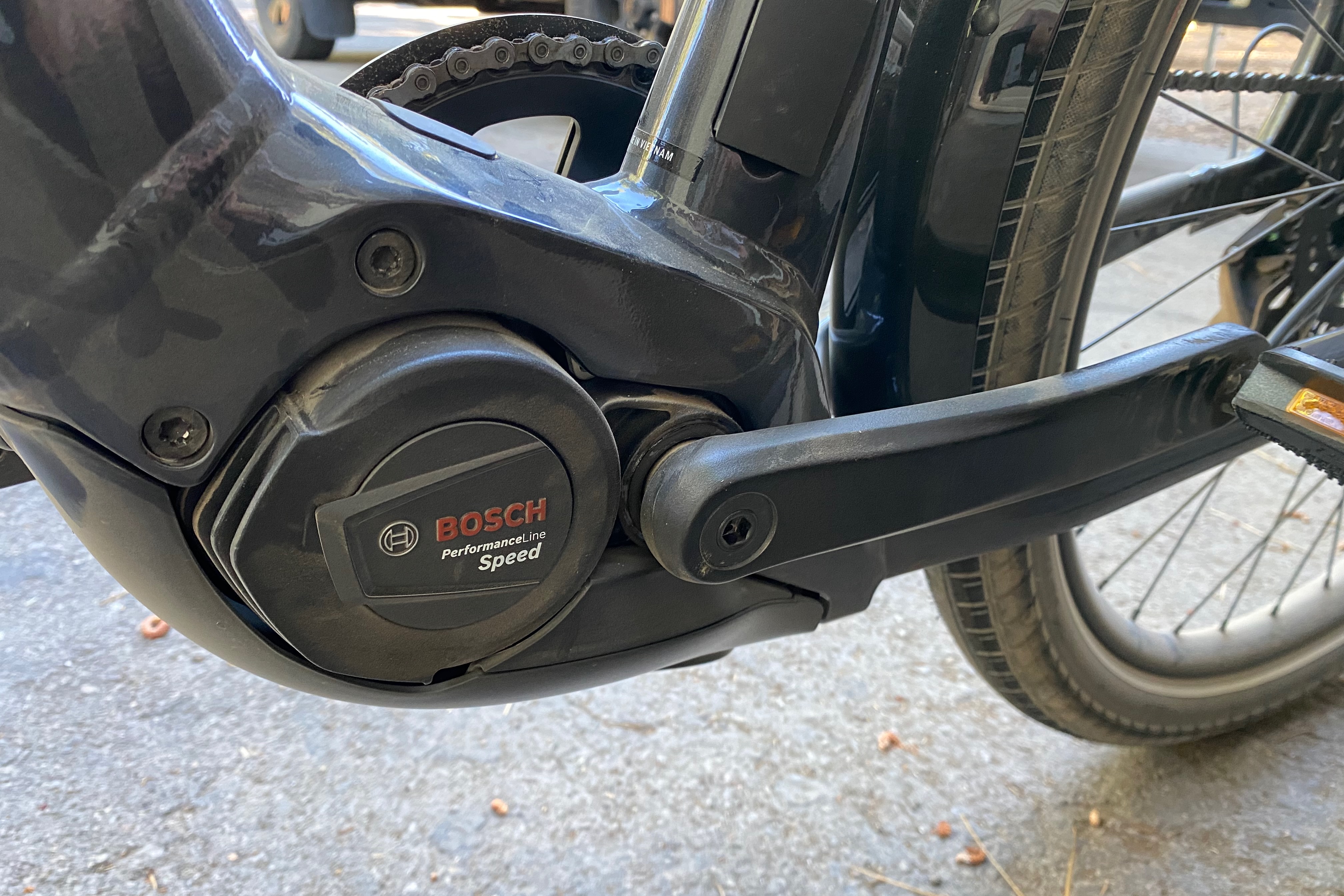
Mid-Drive
Mid-drive motors are praised for their more refined power delivery and natural pedaling support. They use advanced torque sensors to deliver power more proportionally in response to the rider’s pedaling effort. Mounted in the middle of the bike, the mid-drive motor puts power directly into the spindle of the cranks and into the drivetrain. For this reason, the majority of bikes equipped with mid-drive motors don’t have throttles.
Mid-drive motors are a bit more complex, and therefore, they are more expensive than rear hub motors. The majority of quality electric mountain bikes utilize mid-drive motors, as do higher-end electric commuters and cargo bikes. A drawback to their great performance is that mid-drive motors create significant wear and tear on the chain and gears over time.
Portability: Folding Electric Bikes and Vehicle Rack Compatibility
Electric bikes are notoriously heavy, so any increased portability that’s worked into the design can be a major asset.
While some standard bike racks are compatible with electric bikes, many are not. Hitch-mounted platform-style racks tend to work better, but many electric bikes often require special electric bike-specific racks. Check out our guide to the best hitch bike racks for more information on transporting an electric bike with your vehicle.
To solve the portability problem, some electric bikes fold down into a trunk-sized package. While a folding frame doesn’t make sense for a high-performance bike, it’s a major asset for many users. On this list, the Rad Power RadExpand 5 Plus is a versatile and well-rounded folding electric bike with a step-through frame.
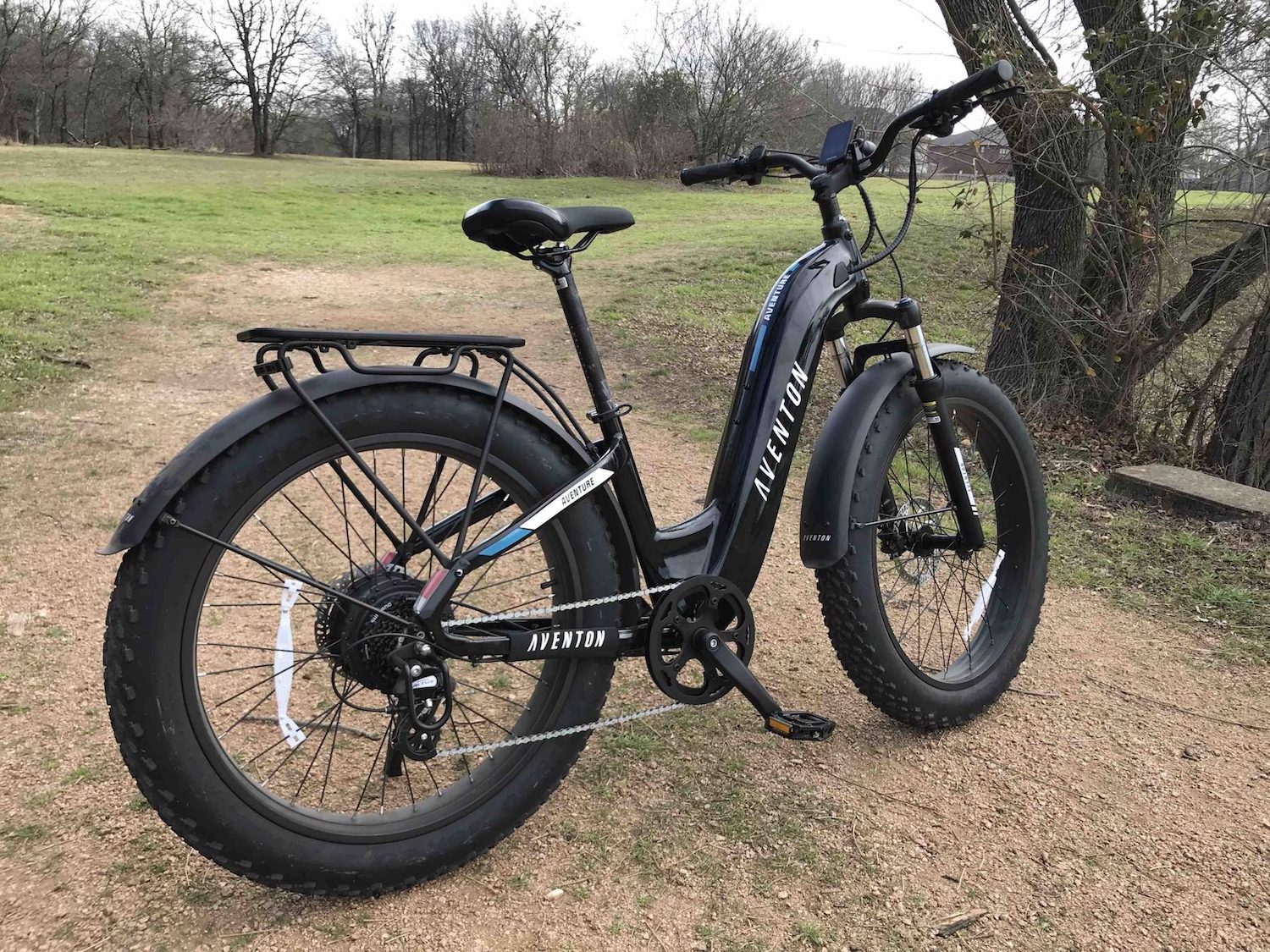
Fat Tire Electric Bikes and Winter Riding
With the right tires and feature set, electric bikes can be capable of four-season transportation. Fat-tire bikes have been popular in snowy places for years now, and fat-tire electric bikes are following suit. Not only that, but the wide, knobby tires on a bike like the Aventon Aventure.2 make it suitable for use on a huge range of surfaces, from pavement to gravel and mellower dirt trails.
If you’re seeking an electric bike for winter use on snowy and icy surfaces, 4-inch (or wider) tires are a must. As for tread, the deeper and knobbier, the better. For a fully winterized ride, we also recommend studded pedals and extra bright lights. Keep in mind that lithium battery performance drops in cold temperatures, and your bike’s range probably will, too.
Electric Bike Specs: Watts, Volts, Amps, and Torque
On paper, electric bike performance is determined by specs such as motor power and battery capacity. It’s easy to get bogged down in e-bike specs and power ratings.
As a prospective buyer, it’s important to know that a motor’s “size,” or power output, is measured in watts (W) or torque (Nm). Most rear hub motors vary in size between 250 and 750 W. The higher the number, the more powerful the motor. Mid-drive motors generally list their power in terms of torque, with most falling between 60 and 100 Nm — and the 1,000W motor on the QuietKat Apex XD putting out a whopping 200 Nm. Again, the higher the number, the more powerful the motor is.
Consider the speed you want to travel, the terrain where you ride, and how much cargo you intend to carry. A more powerful motor will make it easier to ride faster, climb steeper hills, or haul passengers. That said, a motor with less power may work just fine for those who like to pedal or aren’t as interested in riding as fast as possible all the time.
Batteries typically have two numbers associated with them: voltage (V) and amp-hours (Ah). By multiplying those two numbers together, you get watt-hours (Wh), which we list as an easier way to compare a battery’s storage capacity. The higher the number, the more electricity it can store and the longer it will last.
If a long range is important to you, a larger battery will power your motor for longer. If you really need to go the distance, consider bikes that provide the option to add a second battery, like the Lectric XPedition.
It’s important to remember that the motor and battery work together as a system. The larger the motor and the more power you use, the faster the battery drains.
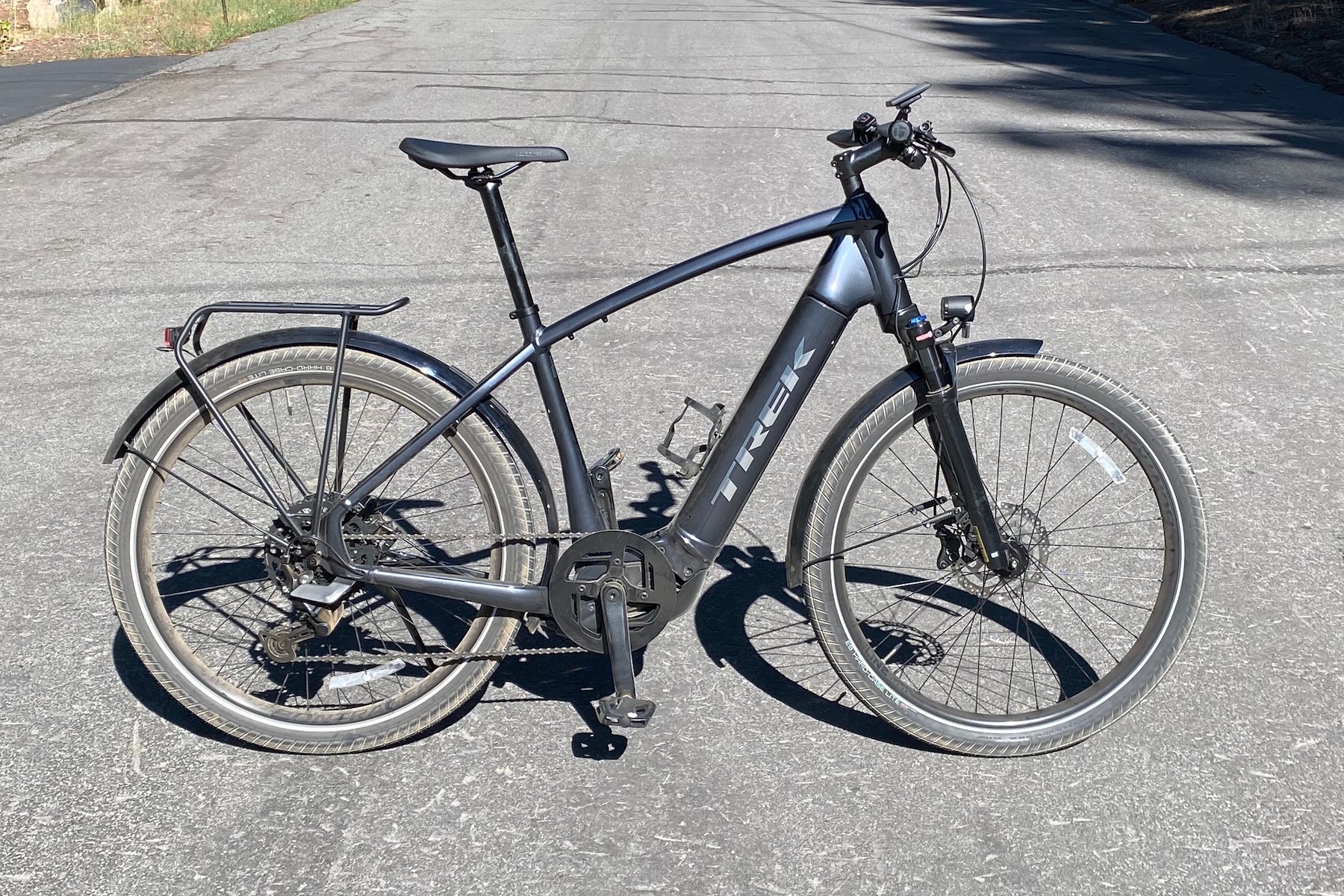
Accessories and Features
Endless accessories and add-ons are available for electric bikes. Some models come with lights, horns, racks, and fenders. Others do not. Many bikes are capable of hauling cargo or kids, but you may not be able to do so until you’ve added the right accessories to your bike.
The majority of e-bike brands sell a range of accessories designed to work with their bikes. Many brands run promotions and include certain add-ons or accessory bundles. Ultimately, included accessories add a lot of value, especially in the budget category.
These can always be purchased later, but you’ll often save money if you opt for included options. Many electric bikes tend to need a few upgrades from their stock feature set, so it’s a good idea to factor this into your budget.
Price & Value
Electric bikes vary significantly in terms of price, with budget-friendly models in the $1,000-2,000 range and premium options topping out well above $10,000. How much you should spend depends on many factors, with your personal budget being one of the most important.
How much you intend to use it, what you’re using it for, and the level of performance you expect. Things like higher-quality materials, nicer components, better-performing motors, and more complex designs tend to command higher prices.
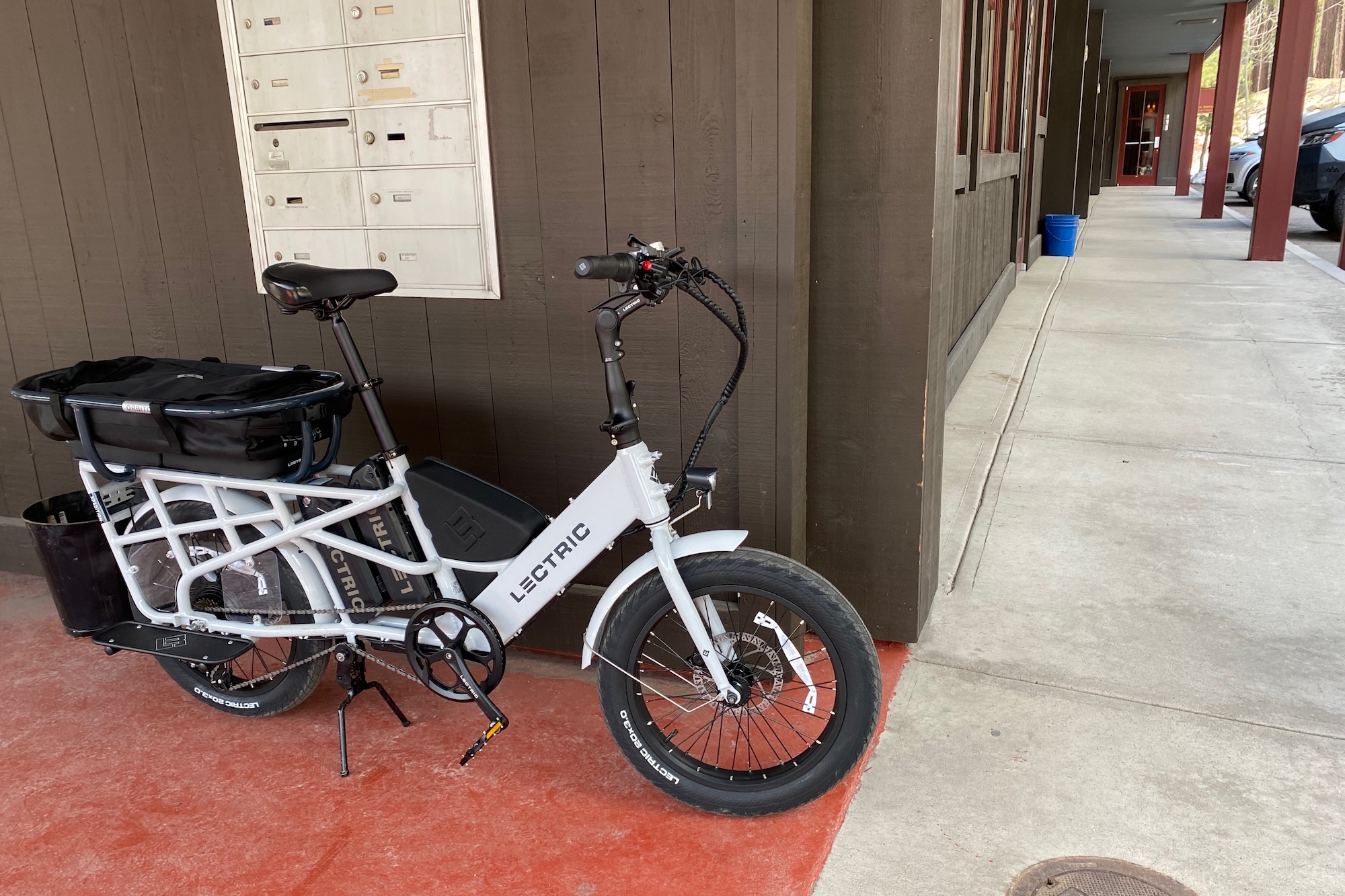
Budget
While there are many high-end options on the market, the lower end of the price spectrum has grown just as quickly. New bike brands seem to pop up every week with more affordable look-alike bikes. We’ve tried many lower-priced e-bikes and learned that budget definitely doesn’t mean bad.
Most bikes in the budget price range have simpler rear hub motors and less expensive components that help keep the price down. They may be a little clunkier in use and less streamlined in their appearance, but in our experience, they still work well.
One of our favorite budget-friendly brands is Lectric, and its XPedition cargo bike is tough to beat for the price. Starting at $1,695 for the single battery setup, the XPedition is a long-tail cargo bike with a 750W rear hub motor, 28 mph top speed, and the ability to haul lots of cargo or passengers. Does it perform on par with the Specialized Globe Haul LT? No, but it costs half the price and is still a great option for most people.
Similarly, the Aventon Aventure.2 ($1,999) slots in nicely here. With a 750W rear hub motor, fat tires, and class 3 capability, this bike is fast and wildly versatile. It makes some concessions in the components department, but this bike can take you anywhere without completely draining your bank account.
The Rad Power RadExpand 5 Plus ($1,899) and the Rad Power Radster Road ($2,199) also stand out here for having powerful motors, upgraded torque sensors, Safe Shield batteries, great controls, and good handling in their respective categories.
Mid-Tier
This may sound a little crazy, but we consider e-bikes between around $2,500-4,000 to be in the mid-price tier. Here we see a mix of rear hub and mid-drive motors, but we see a fairly dramatic increase in the quality of components, attention to detail, and overall finish quality.
The Aventon Ramblas ($2,899) is one of the least expensive mid-drive e-MTBs on the market, and it’s an awesome entry-level option. With a hardtail design and in-house motor, it undercuts the price of most affordable electric mountain bikes by about half, but it’s still a blast on the right terrain with trail-worthy components that we found to work well.
Our choice for the best overall electric cargo bike is the Specialized Globe Haul LT ($3,500). Normally, we expect mid-drive motors at this price, but this bike’s 700W rear hub motor is plenty powerful and allows this bike to have a throttle, which we appreciate. The component spec is great, handling is best in class, and this bike can replace your car with the right accessories.
Our top-rated electric commuter, the Trek Allant+ 7S Gen 2 ($3,850), fits in nicely here as well. This bike steps up with the premium performance of the Bosch mid-drive motor, along with a stellar build and all the commute-friendly features you’d expect for the price.
Premium
Above around $5K, we’re getting into the realm of premium e-bikes. Realistically, the sky’s the limit, and you could spend up to around $15K for the fanciest electric mountain bikes out there. Up here in the price stratosphere, most bikes have quality mid-drive motors, excellent system integration, higher-end components, and designs that drive the price up.
When it comes to e-MTBs, even the affordable models from major brands start around $5,000 or more. The Specialized Turbo Levo 4 ($8,000-13,500) is one of the best there is. This full-suspension mountain bike has a powerful mid-drive motor, an integrated battery, a reliable components spec, and a highly adjustable geometry. This bike is well-rounded on the trail and more fun to ride than should be allowed by law.
Our pick for the best hunting e-bike is the QuietKat Apex XD ($6,350-7,000). When you’re deep in the field, you need a bike that is rugged and reliable, and this bike is just that. With a burly, overbuilt frame, super powerful 1000 W VPO mid-drive motor, 4.8-inch wide knobby tires, and a suspension fork, it’s no wonder this bike costs a pretty penny. Add in special features like the five-speed internal drivetrain and two battery size options, and it might just be the perfect hunting transportation.
Frequently Asked Questions
Like regular bikes, electric bike prices vary wildly. In recent years, increased competition has created some excellent budget options. The models on this list range from $1,000 to about $10,000.
If you’re seeking a simple commuter bike, a $1,500-2,000 budget is a good place to start. In the cargo bike category, expect to spend $2,000+. Performance mountain, road, and gravel e-bikes cost upwards of $3,000.
Class 1, 2, and 3 e-bikes are legal in most parts of the U.S. There are exceptions, including certain trails, paths, national parks, and other public lands. Before you buy an electric bike, research local laws and regulations to be sure you’ll be allowed to use it.
An infinite stretch of downhill cruising will take you as fast as you can safely manage. As for pedal assist modes, e-bikes have a top speed of 20 mph (classes 1 and 2) or 28 mph (class 3) at which point the motor will disengage. If a bike is equipped with a throttle it has a top throttle assisted speed of 20 mph.
For everyday commuters, we recommend class 3 bikes. For casual grocery runs and leisurely cruising, classes 1 and 2 work just fine — depending on your preferences.
Many factors affect an electric bike’s range including battery size, motor output, air temperature, type of terrain, and rider fitness. Though brands advertise bikes with a specific (often impressive) range, the answer is “it depends.”
Larger batteries will get you more range than smaller ones and using lower pedal assist modes will prolong battery life compared to using higher levels of pedal assistance. Likewise, the more effort you put into pedaling, the farther you can go.
Potentially. If you’re seeking daily short or mid-distance transportation, an electric bike can handle it. If you need something to manage short runs to the grocery store or to pick up the kid from school, an electric cargo bike can do that too.
It really depends on where you live, how far you need to ride, and what you need to bring with you.
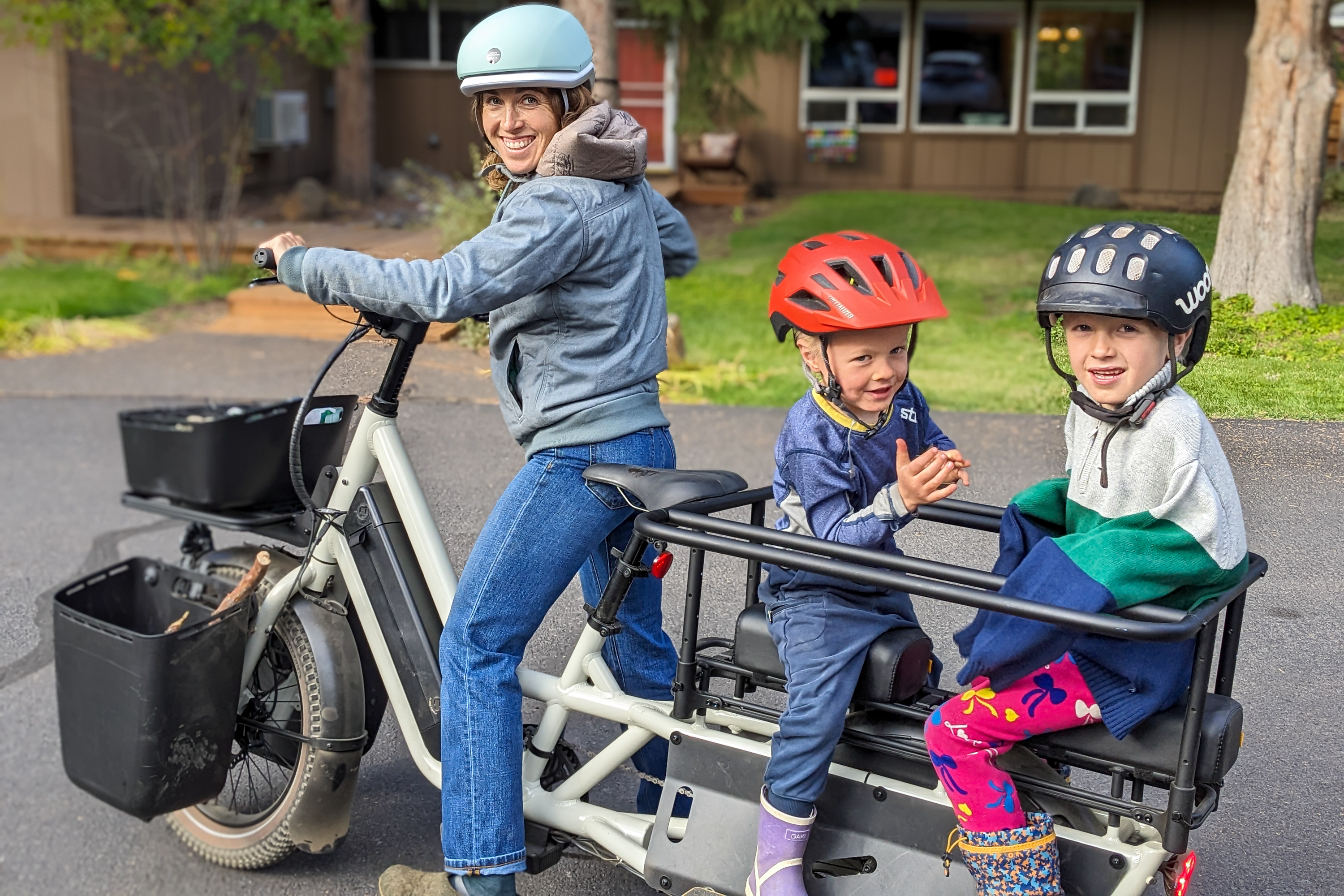
The Best Electric Cargo Bikes of 2025
We tested the best electric cargo bikes of 2025. Whether hauling gear, kids, or groceries, these e-bikes will get you there fast and easy.

The Best Bike Lights of 2025-2026
We tested models from Knog, Fenix, Garmin, Lezyne, and more to find the best bike lights for every need and budget.
